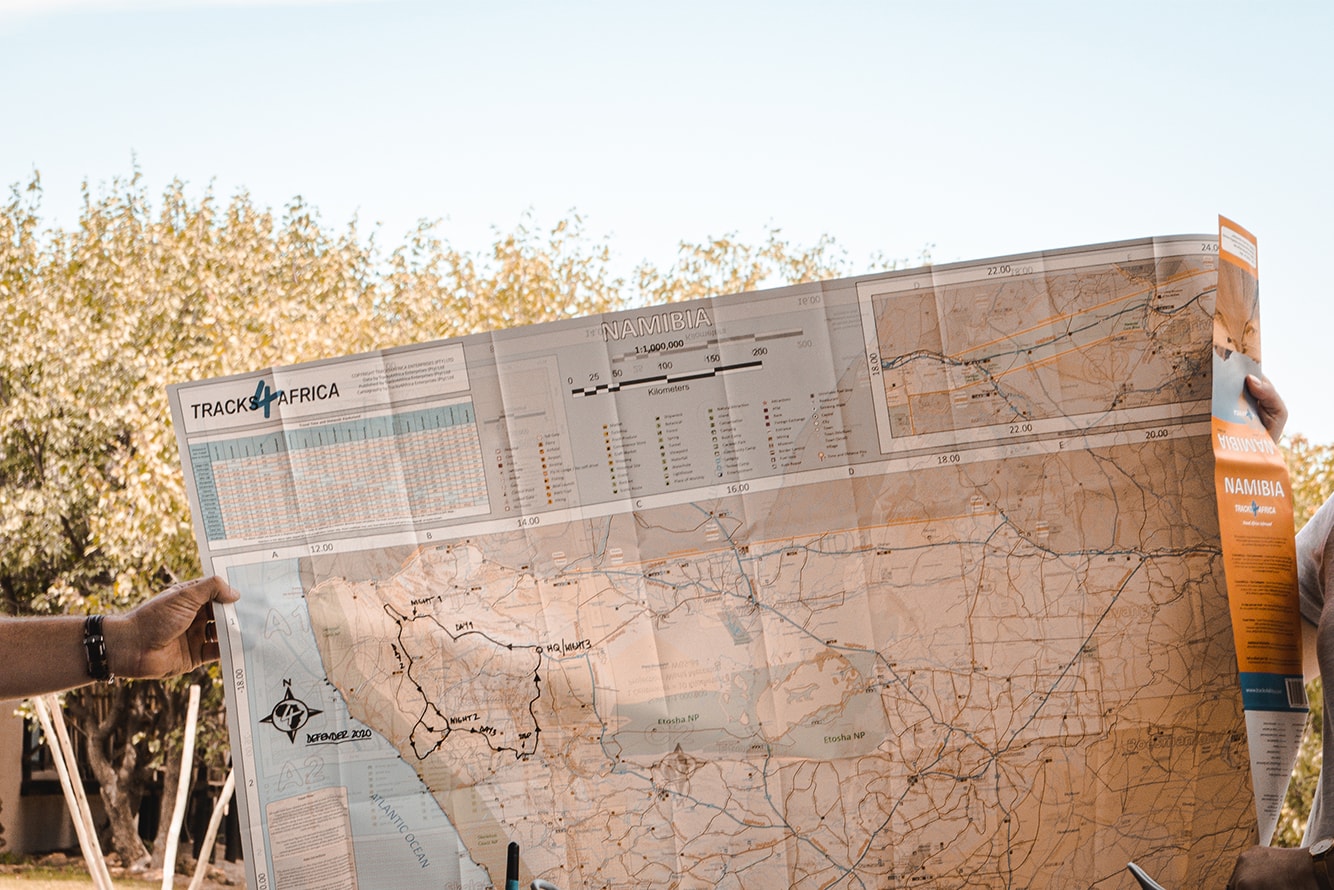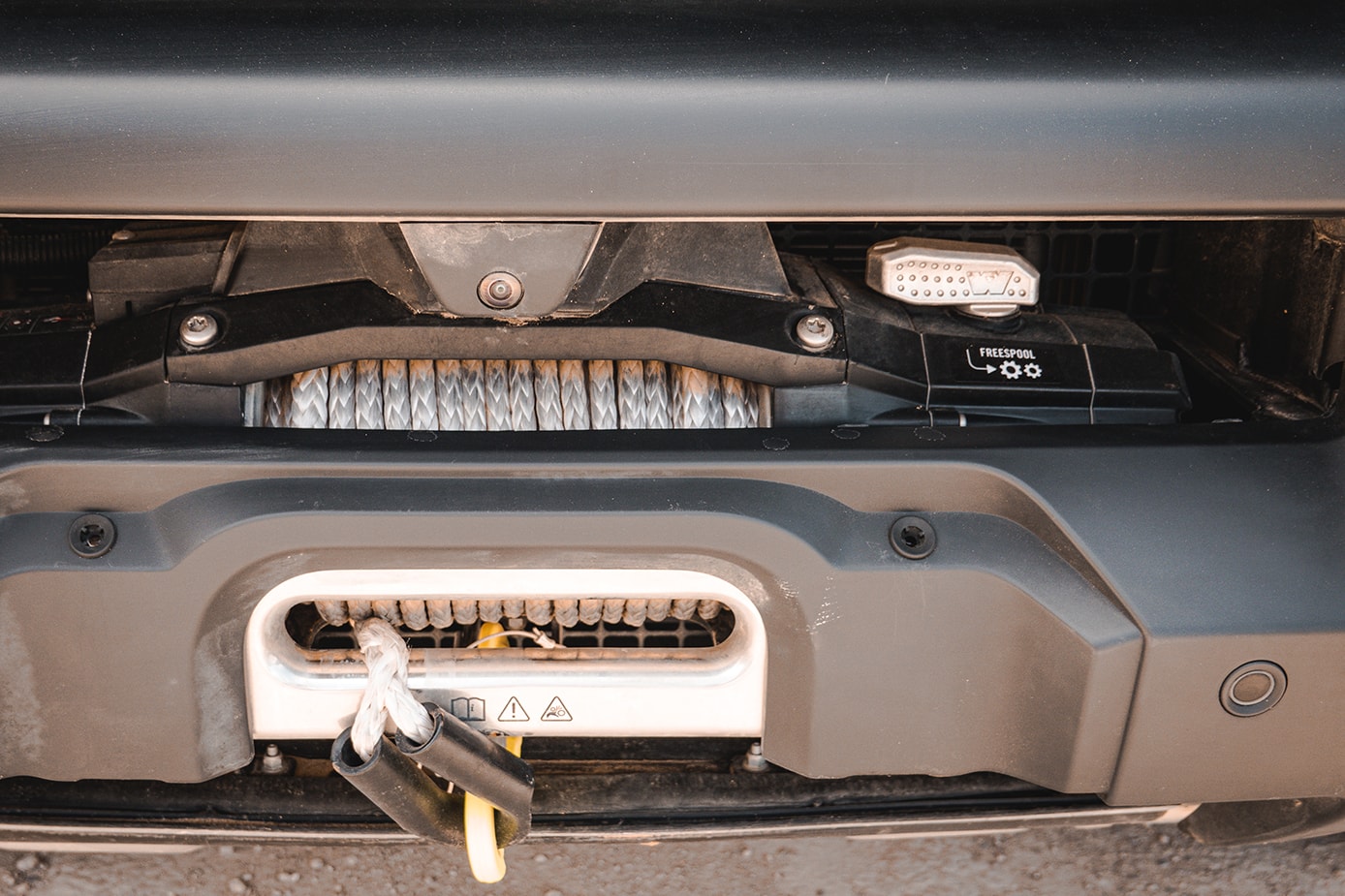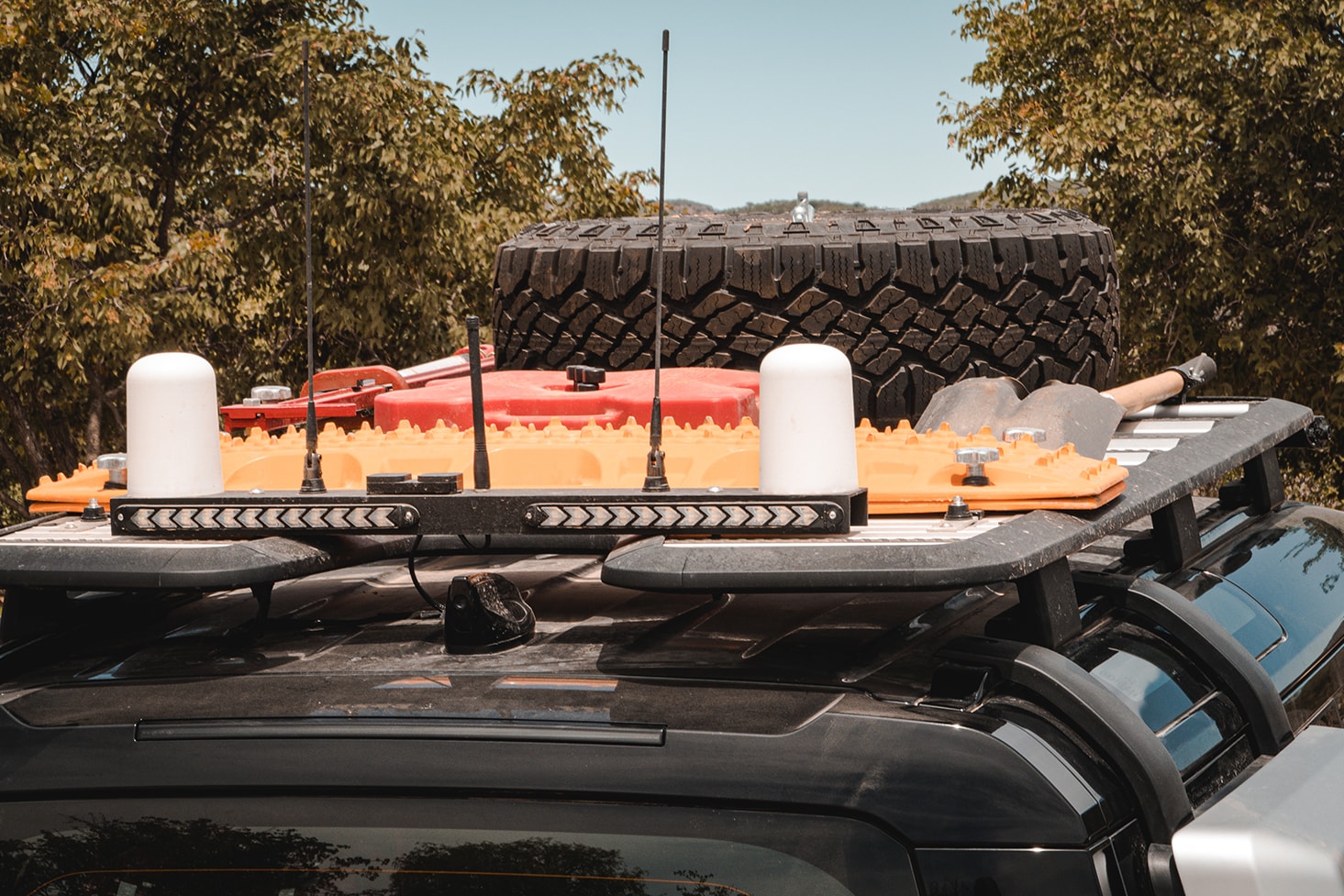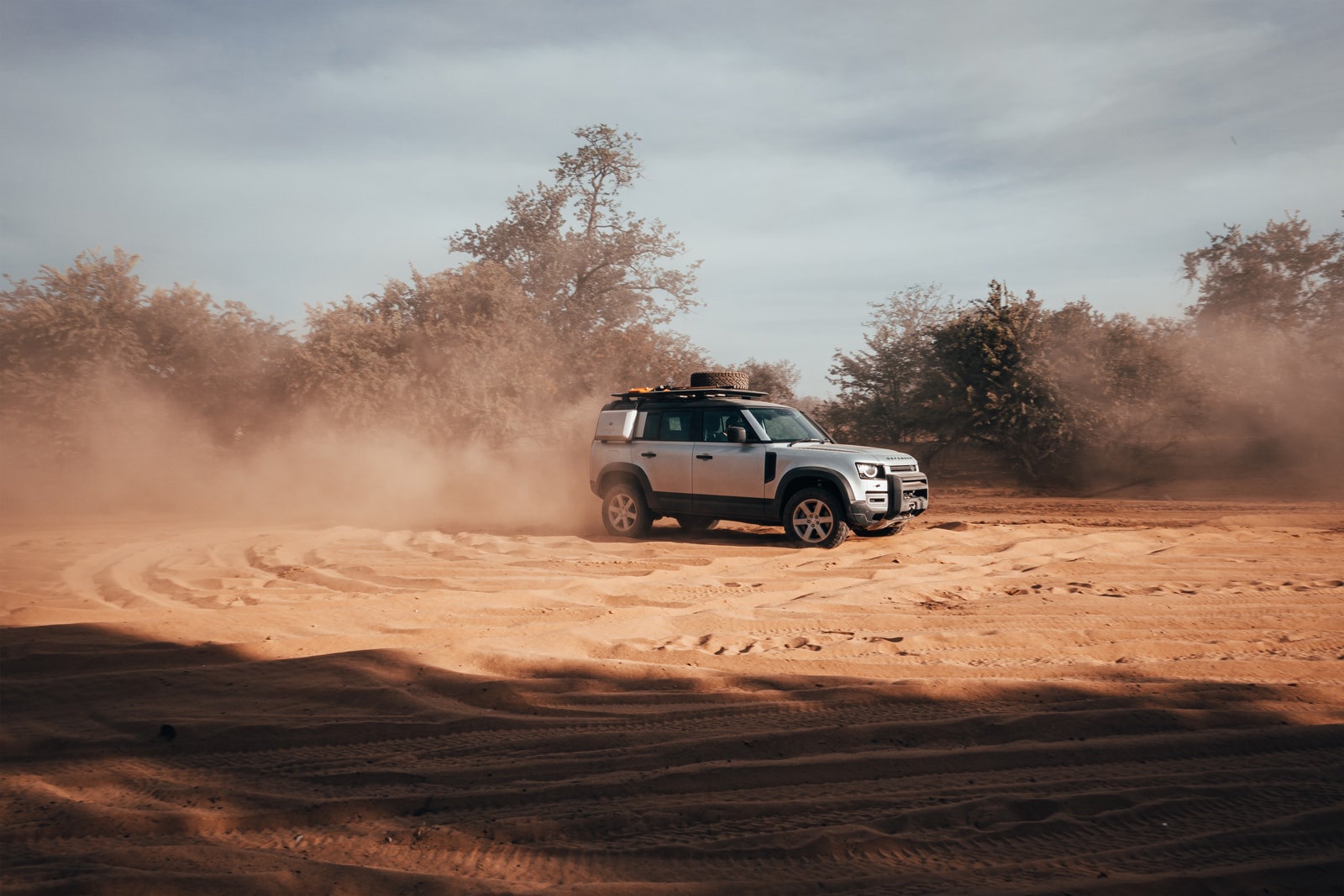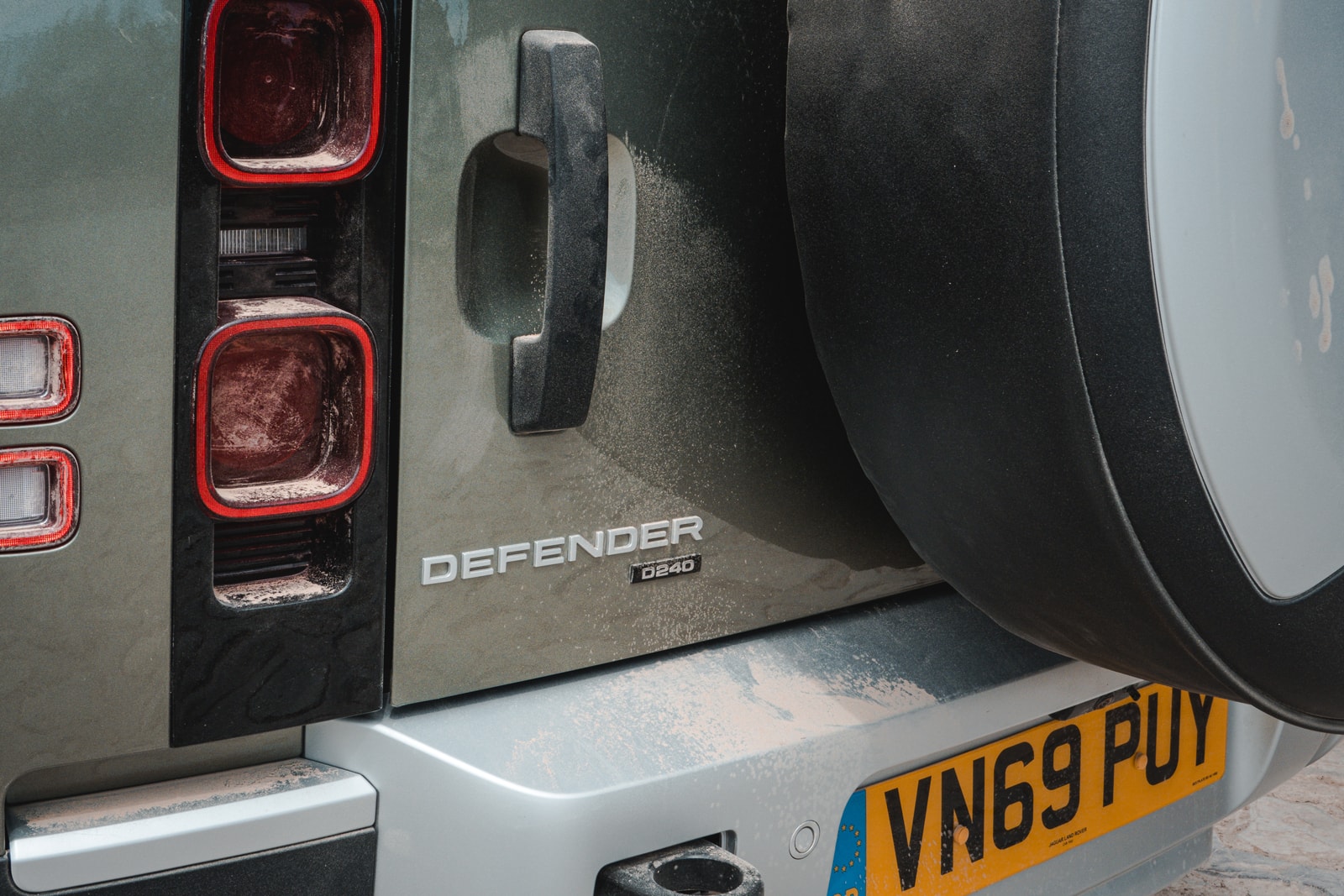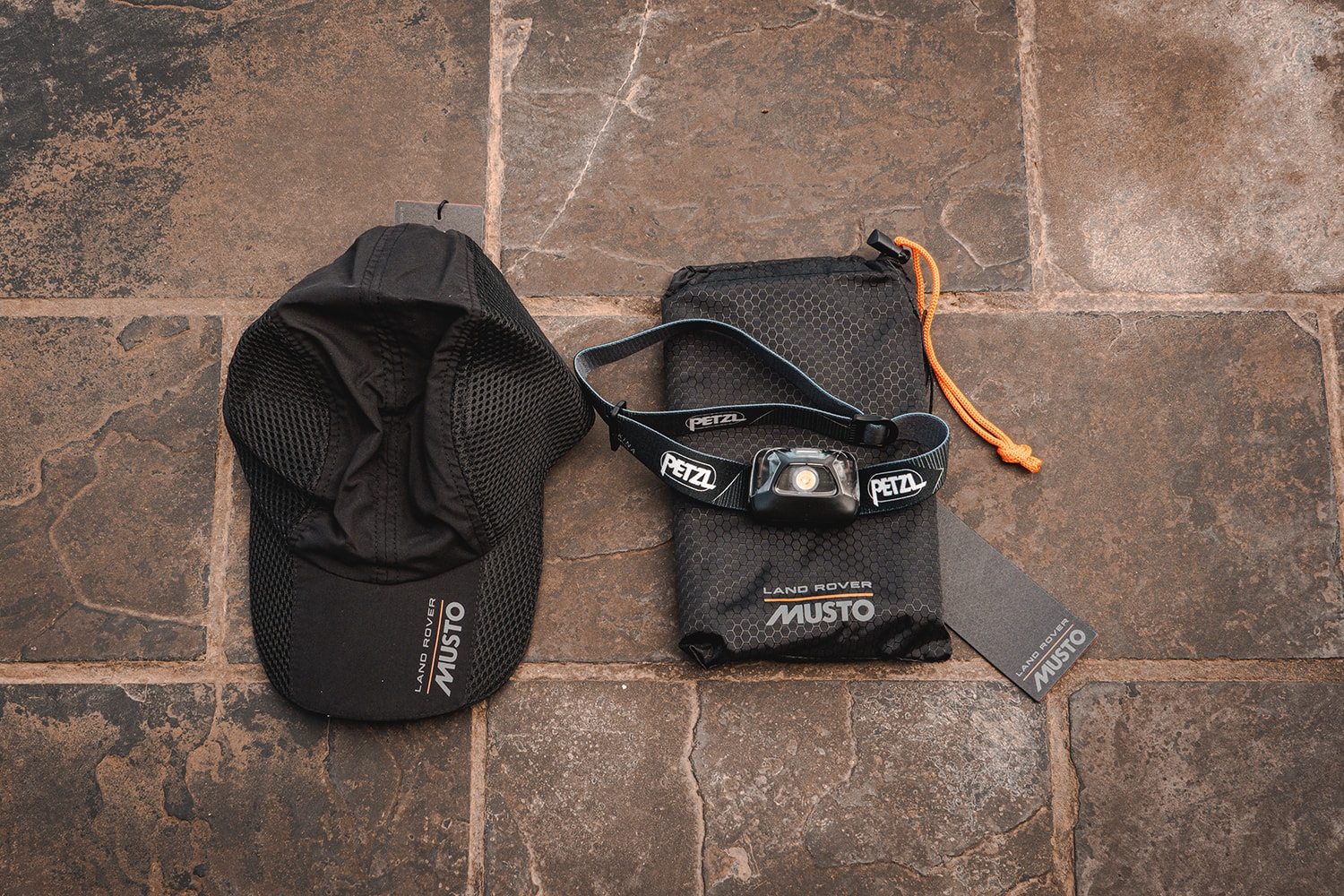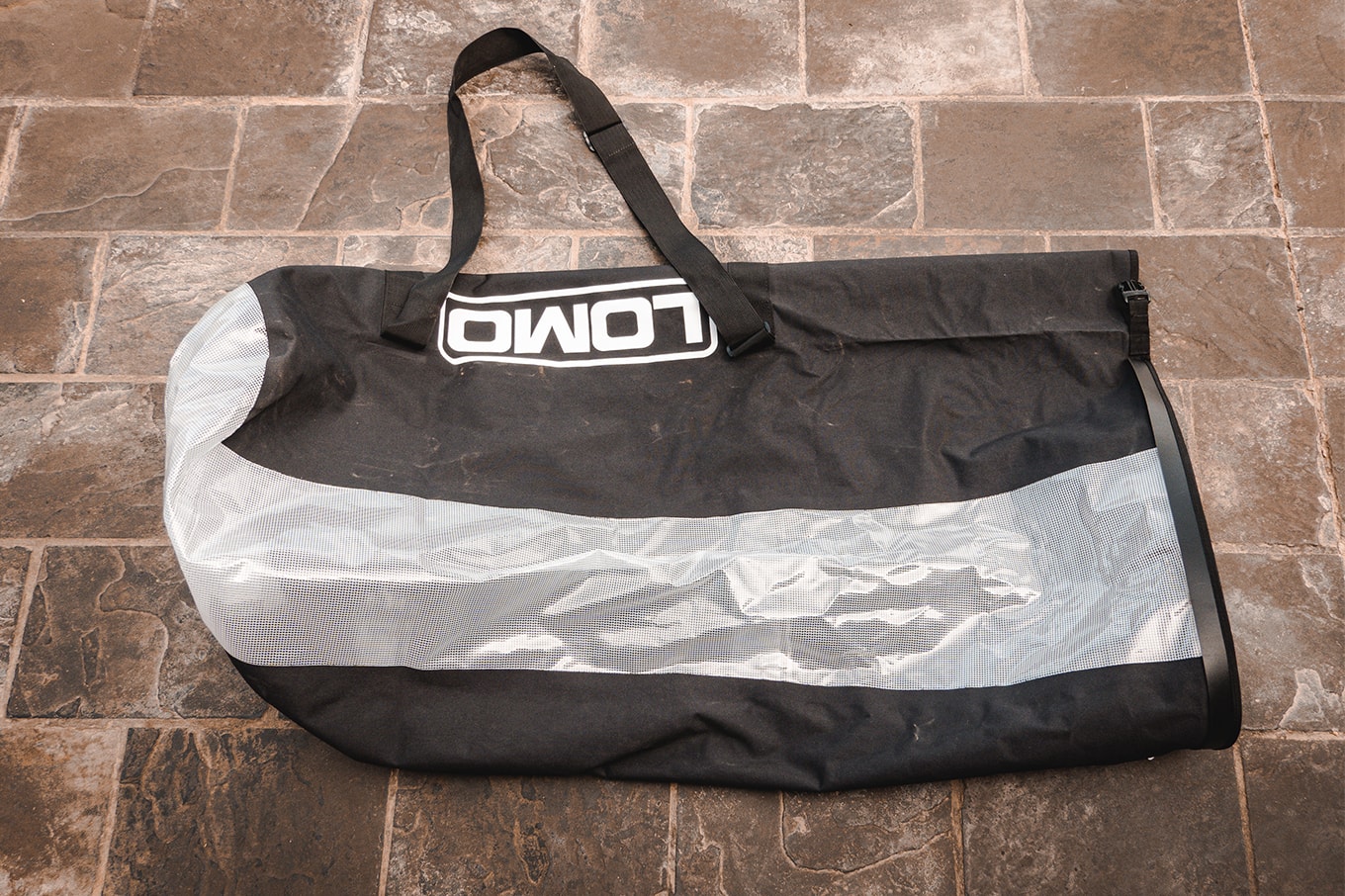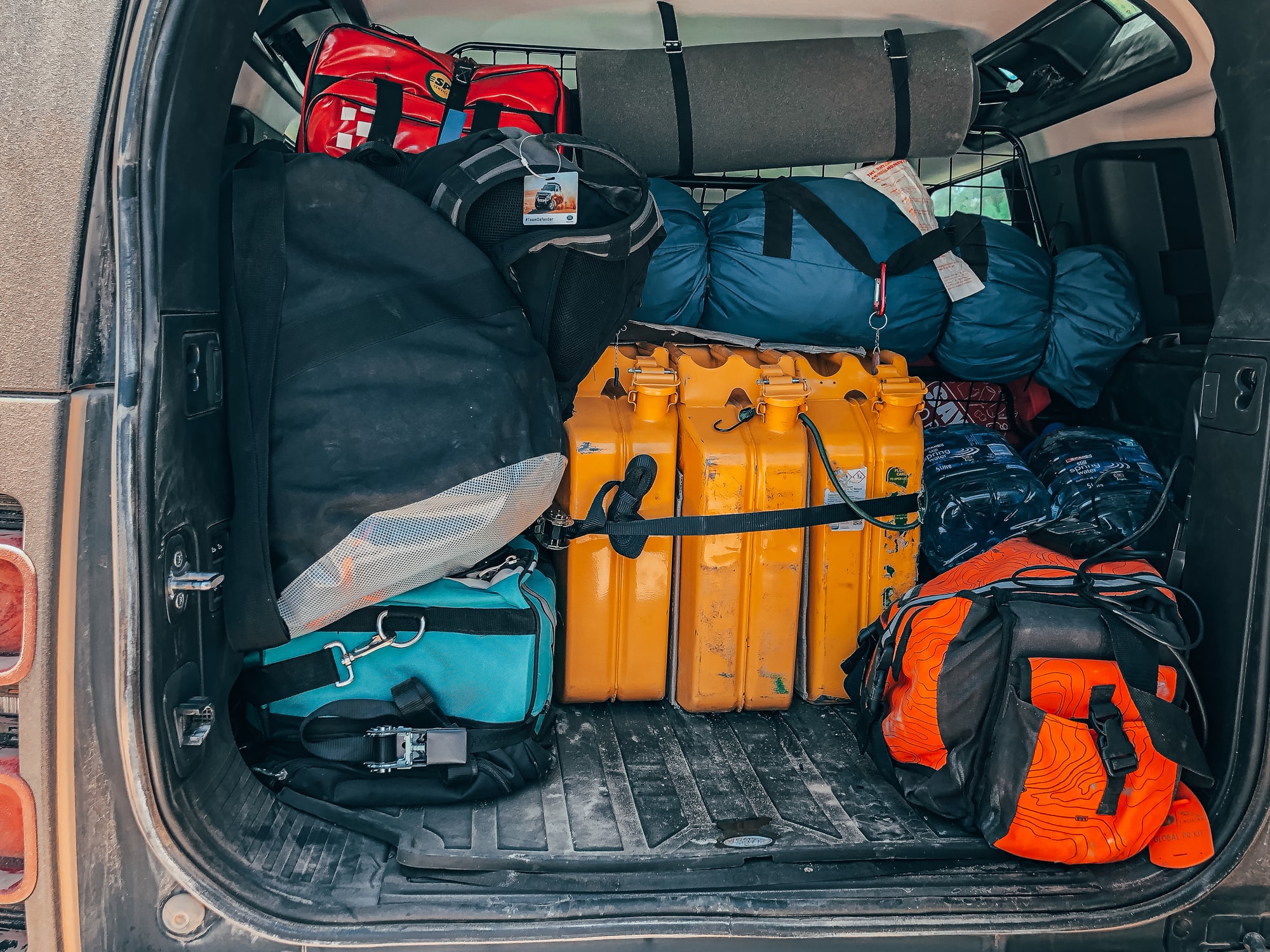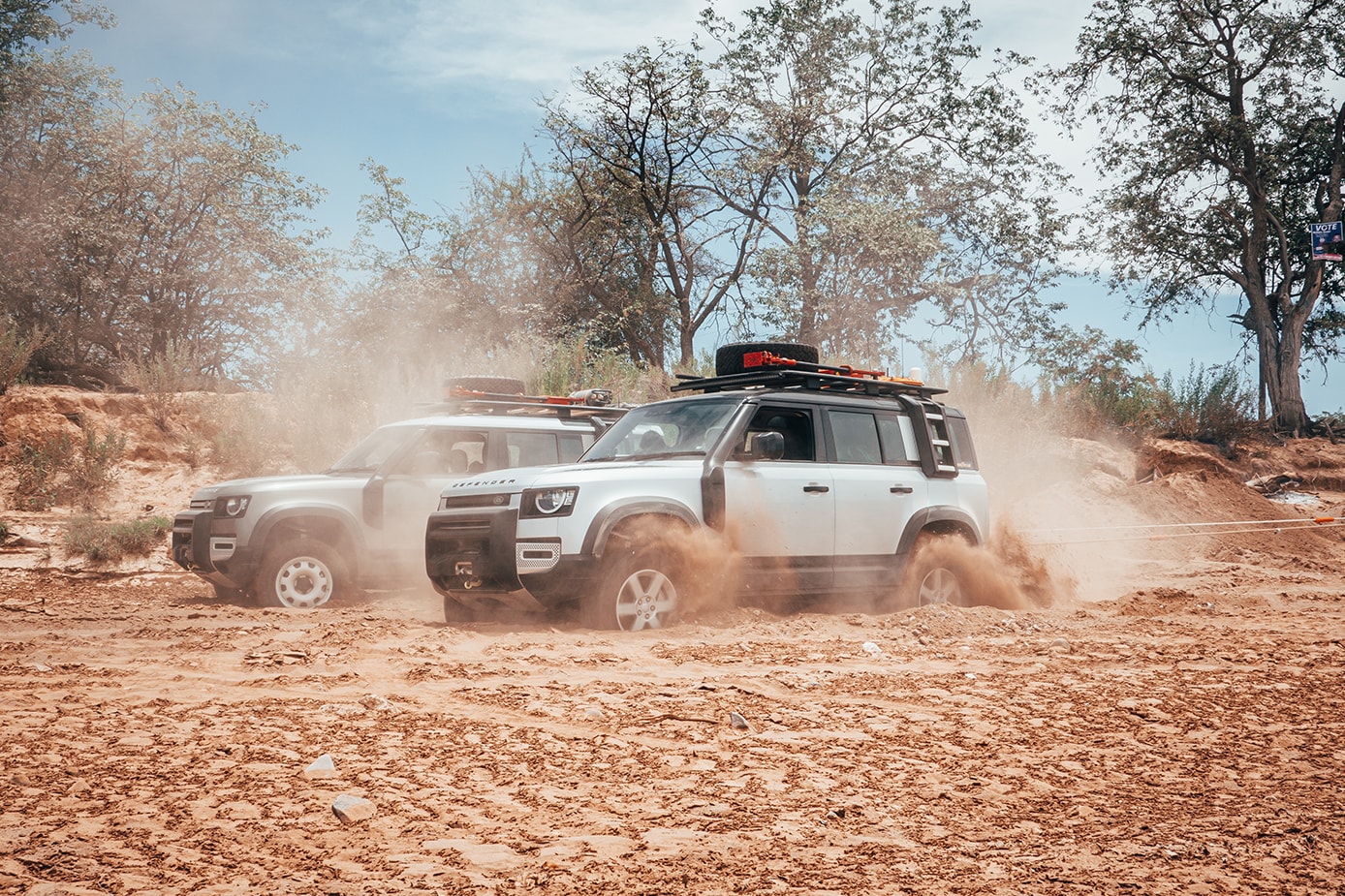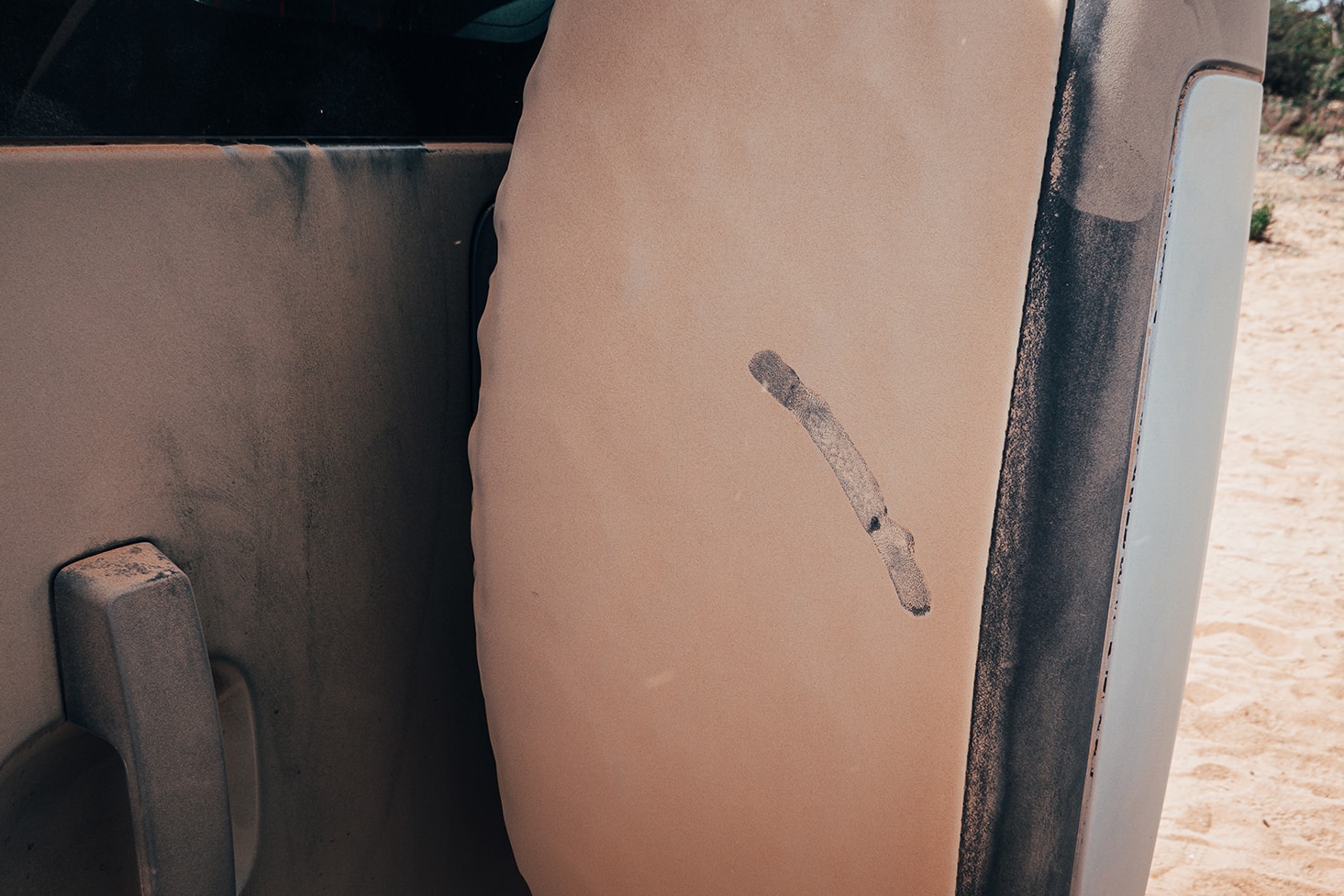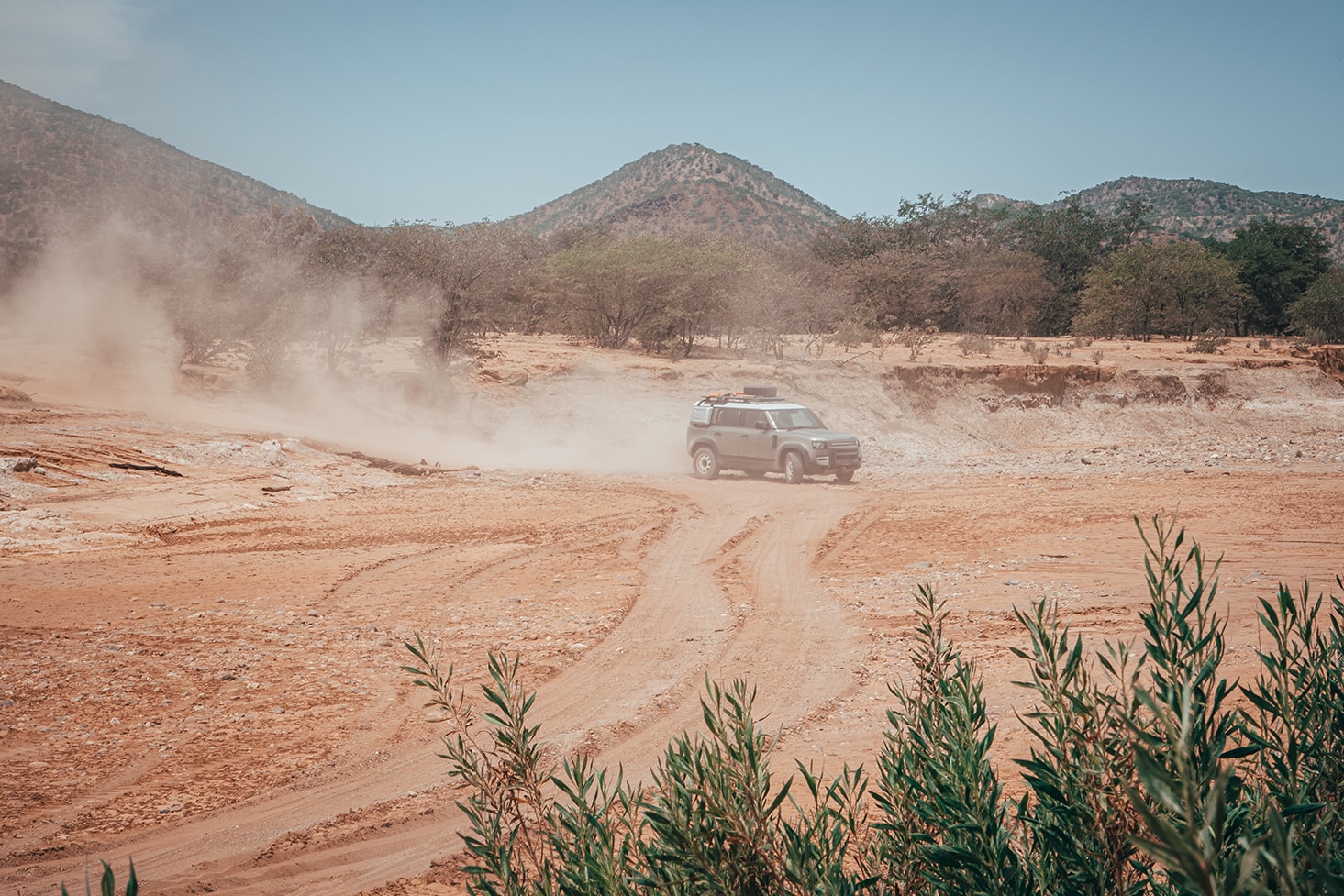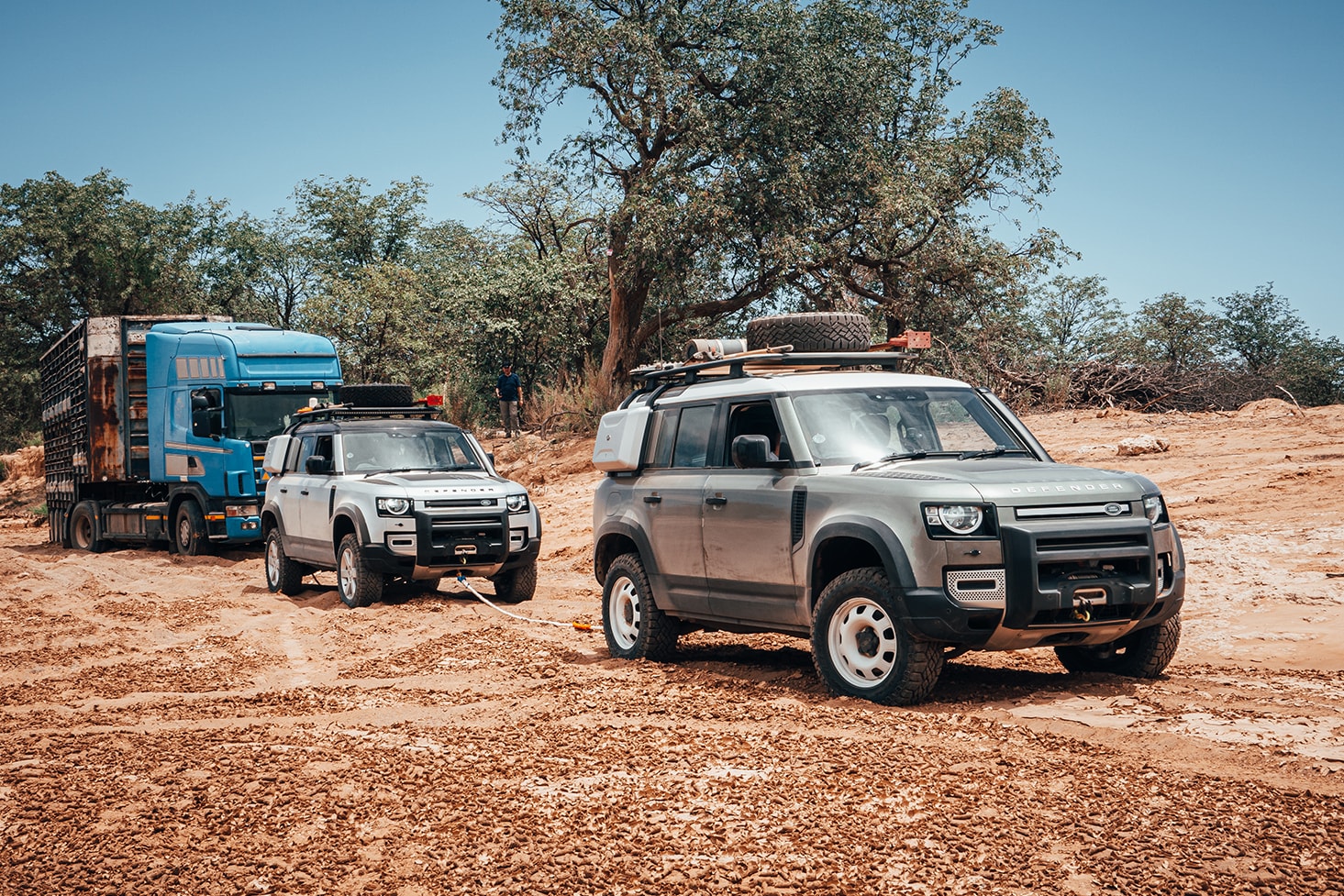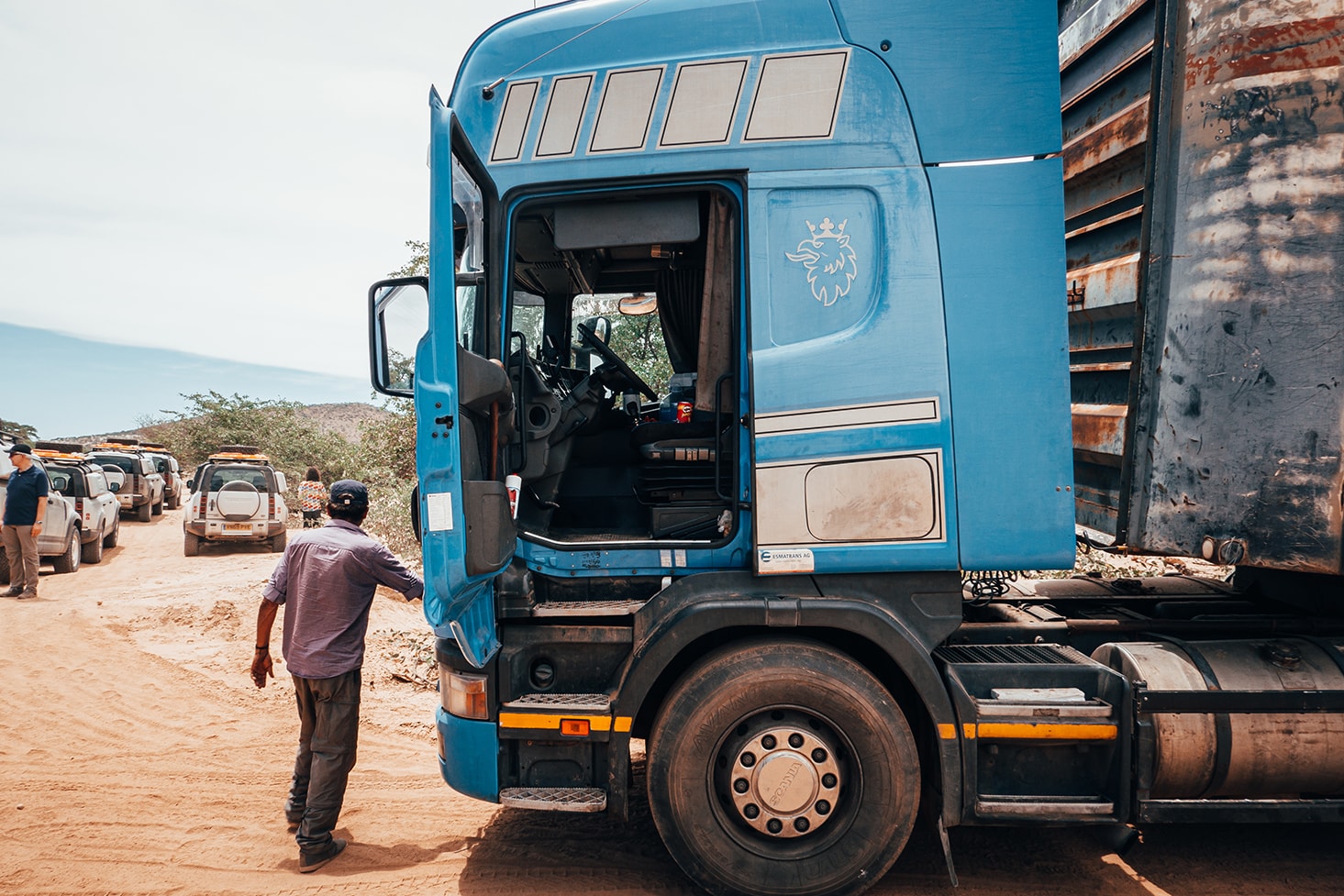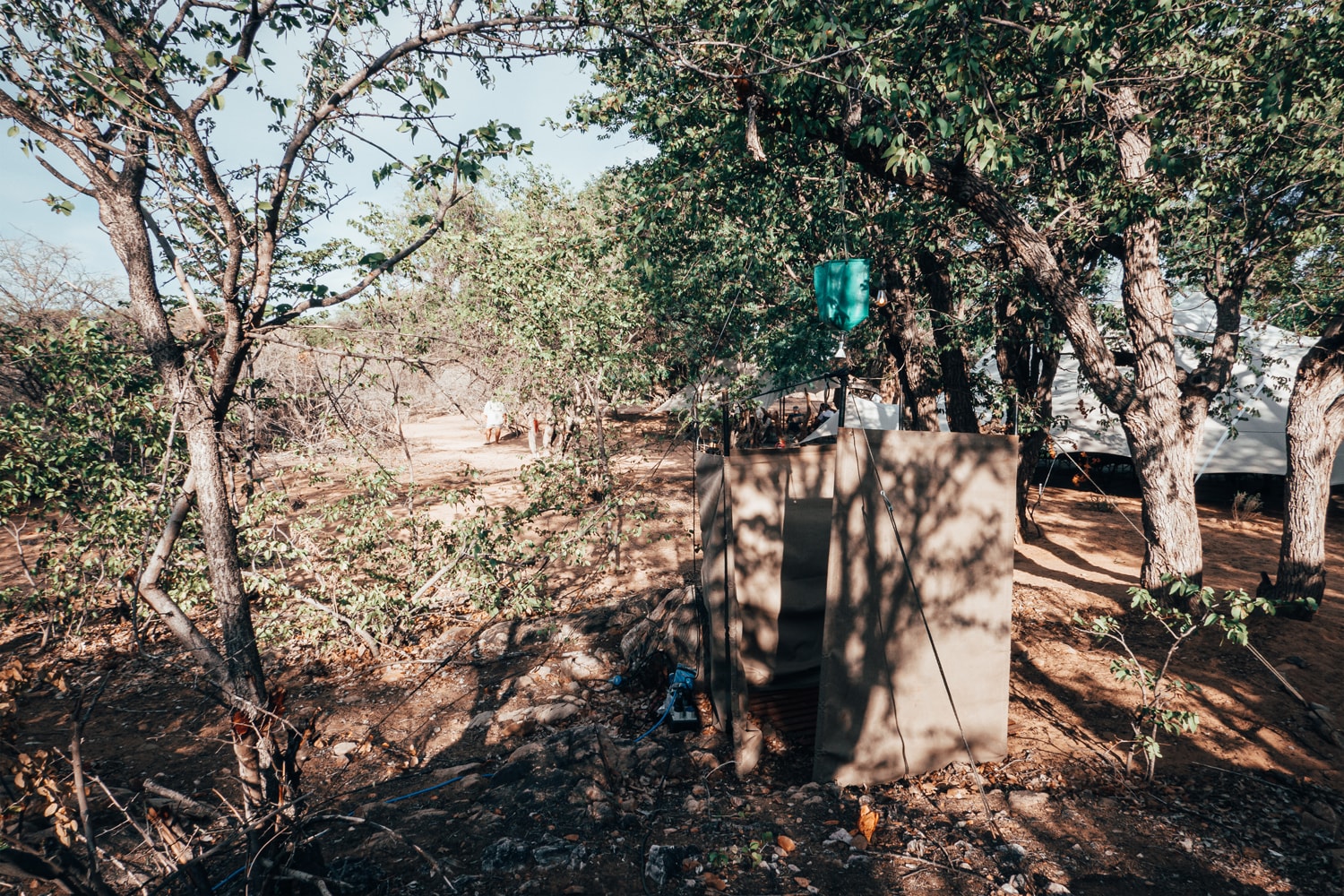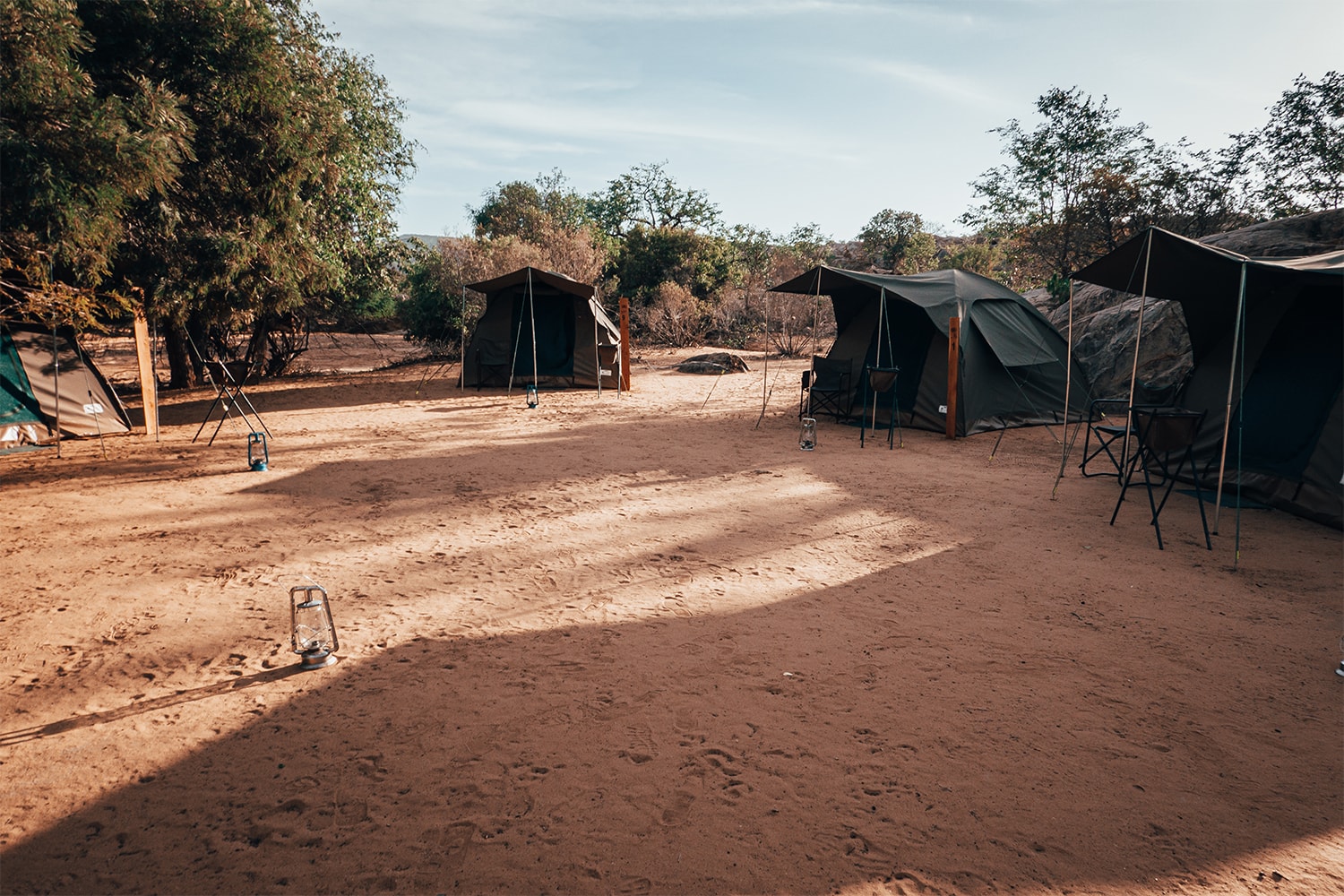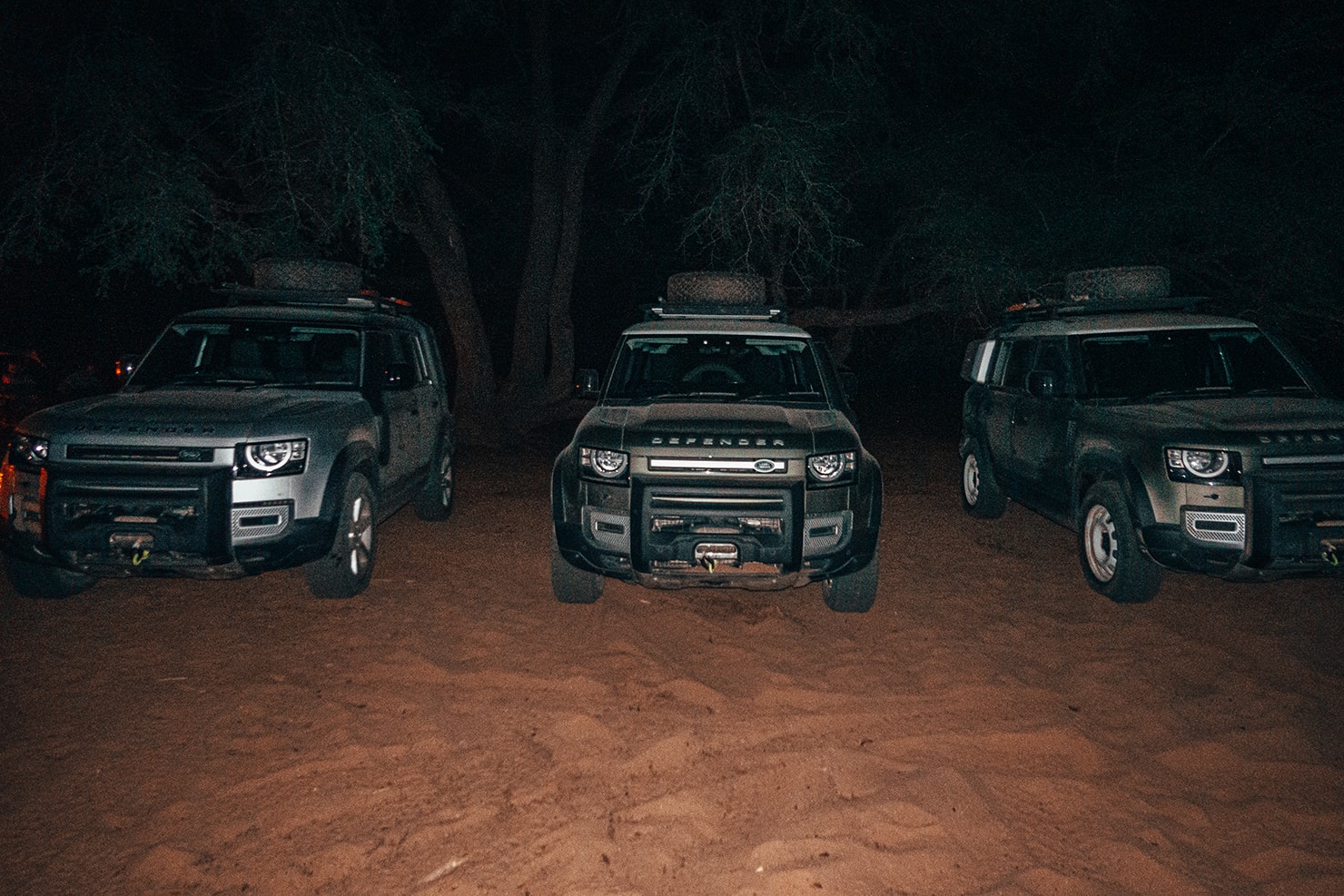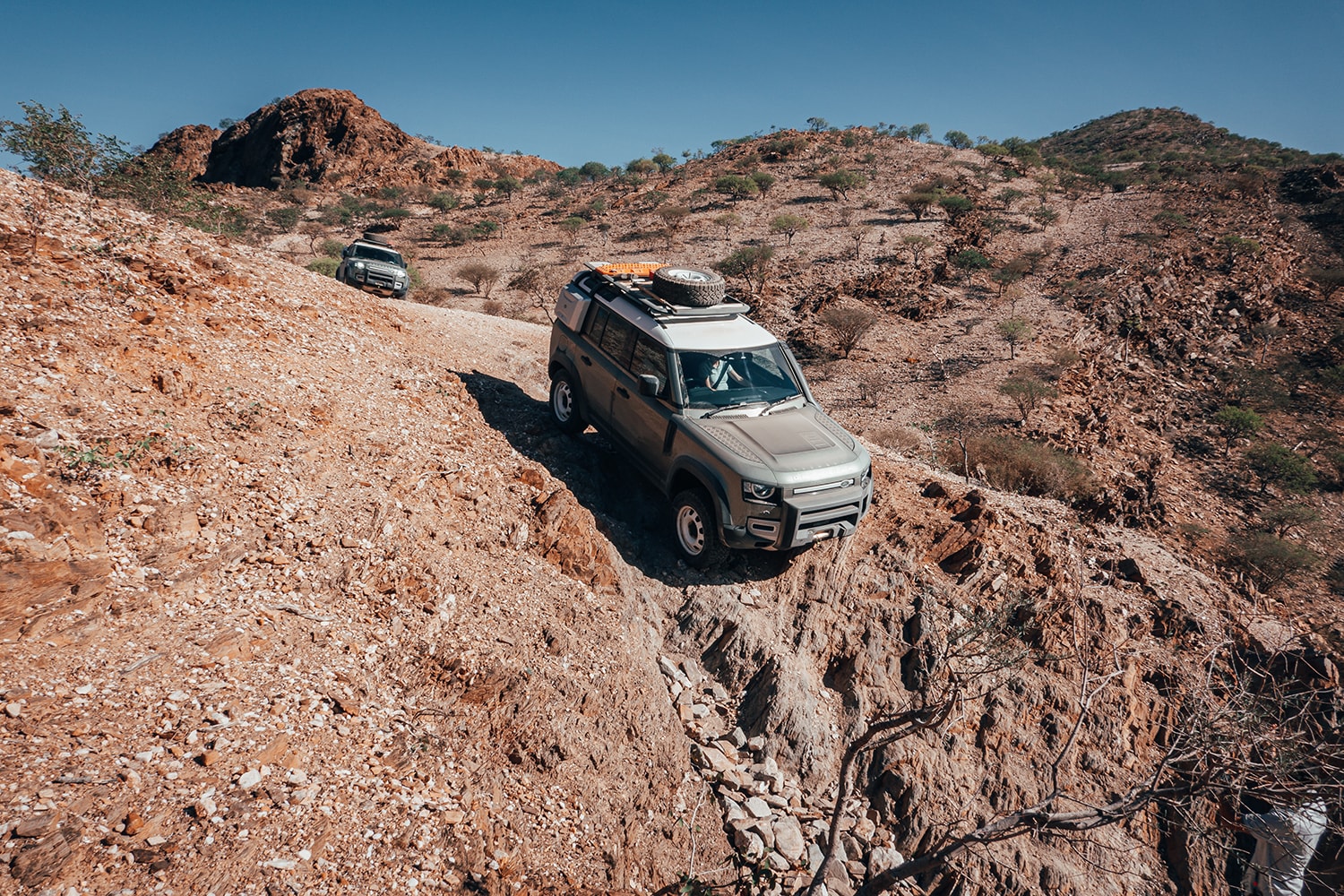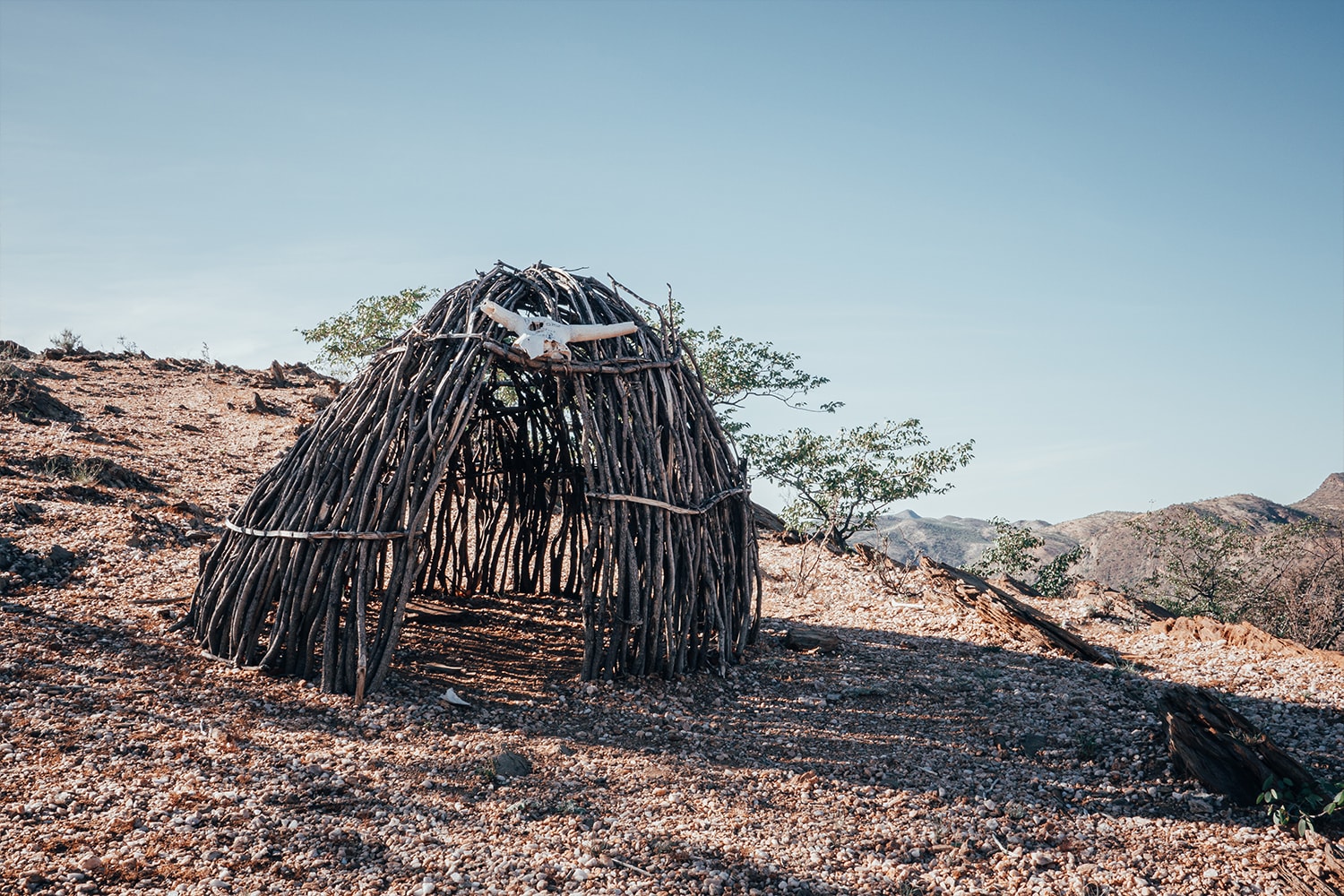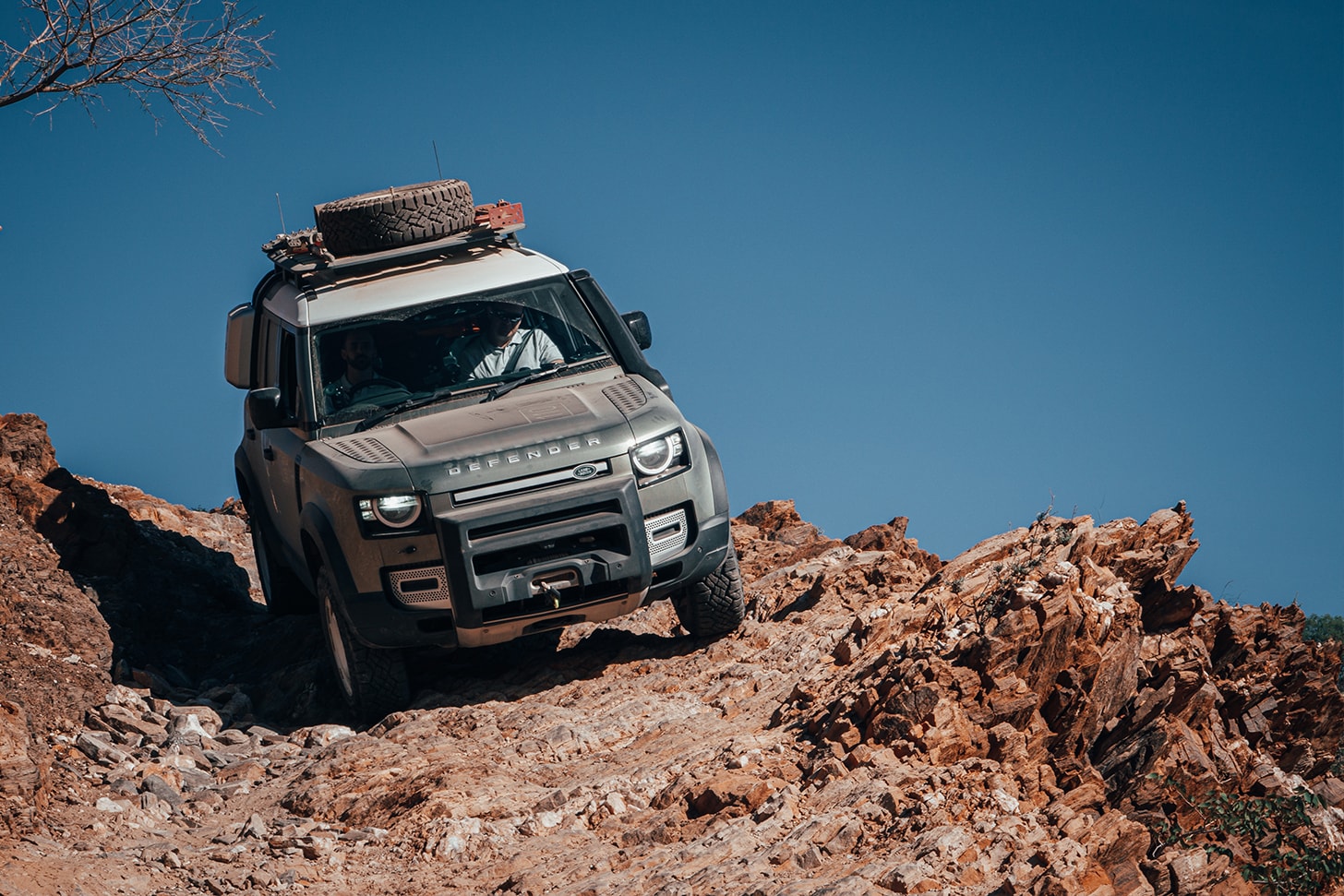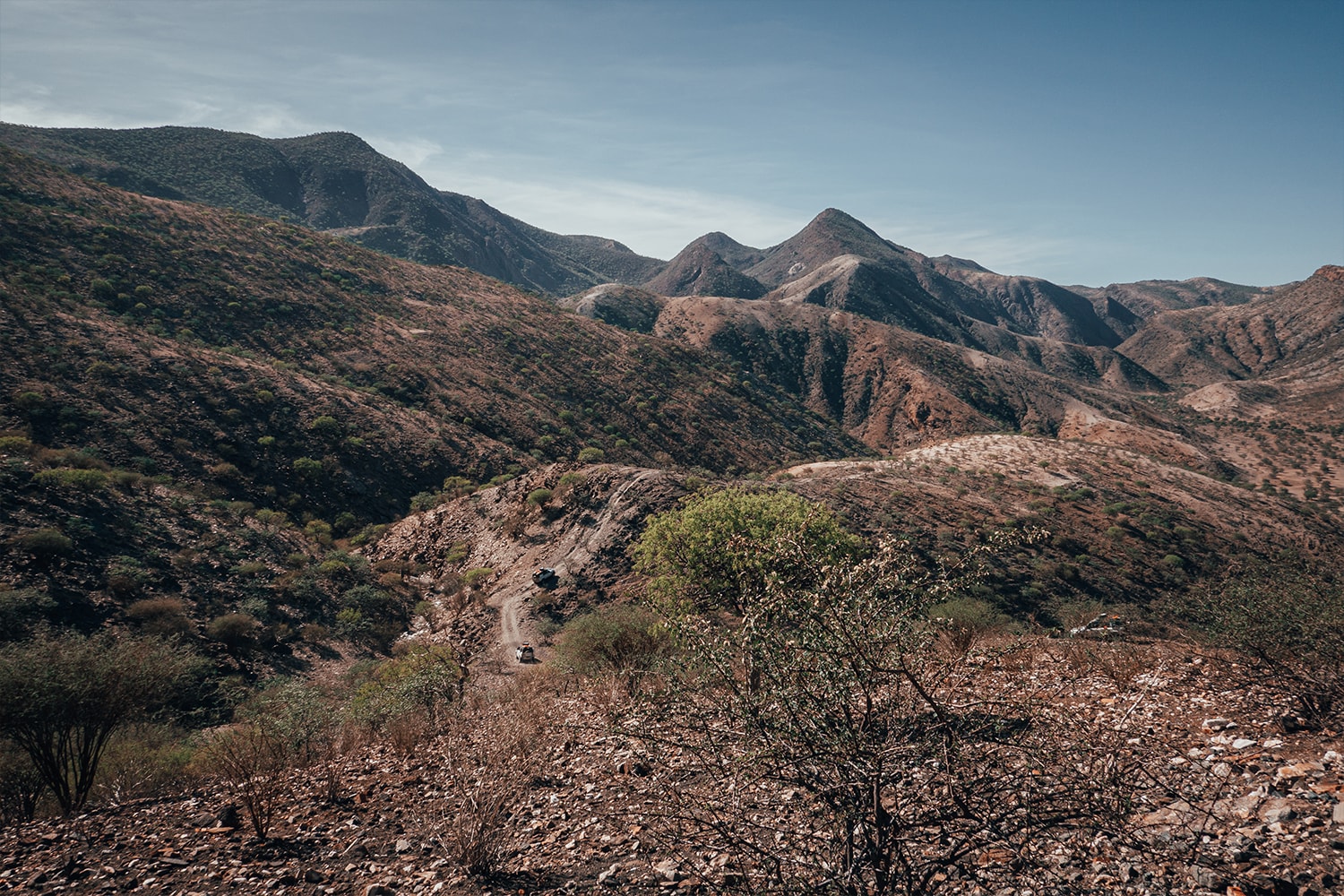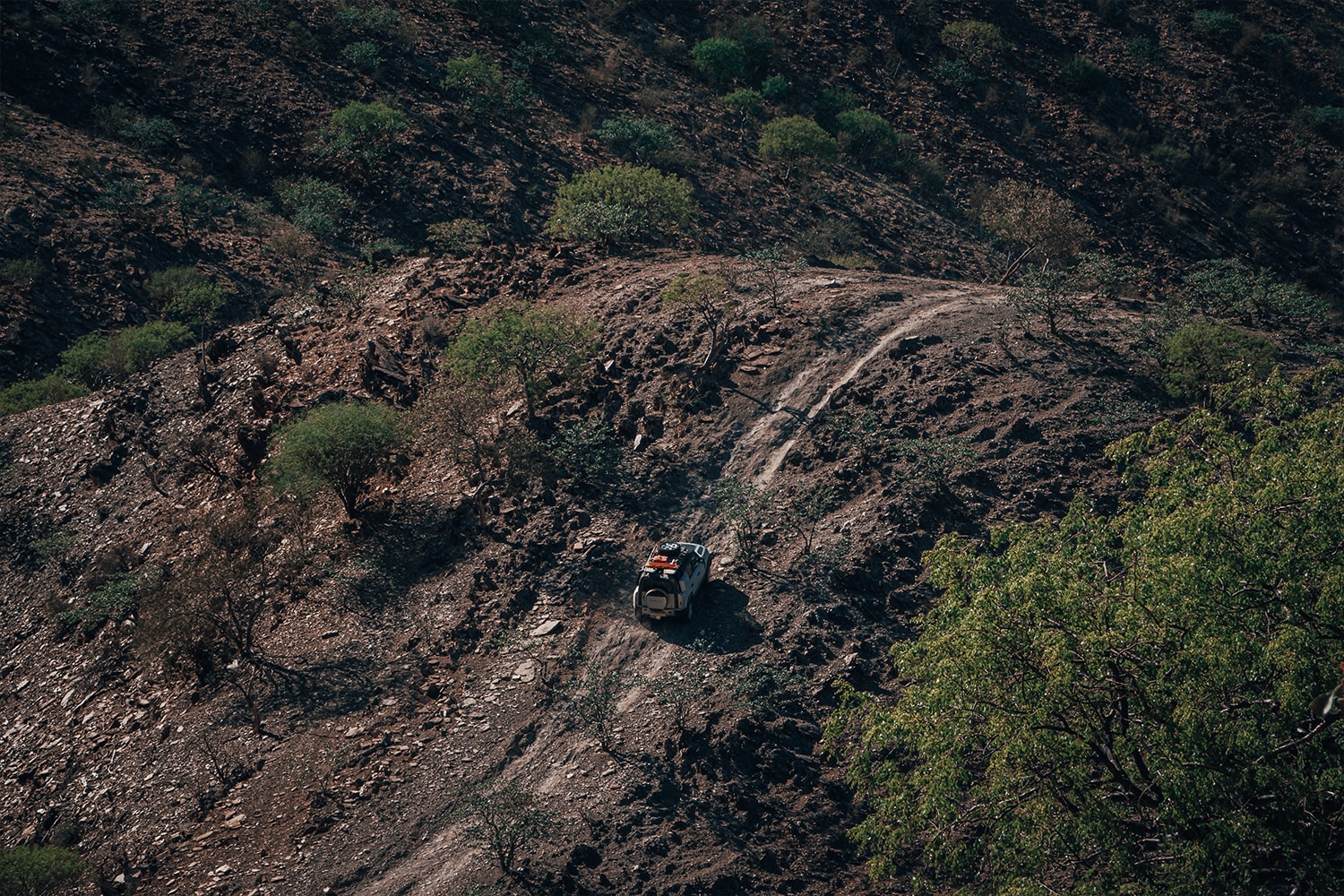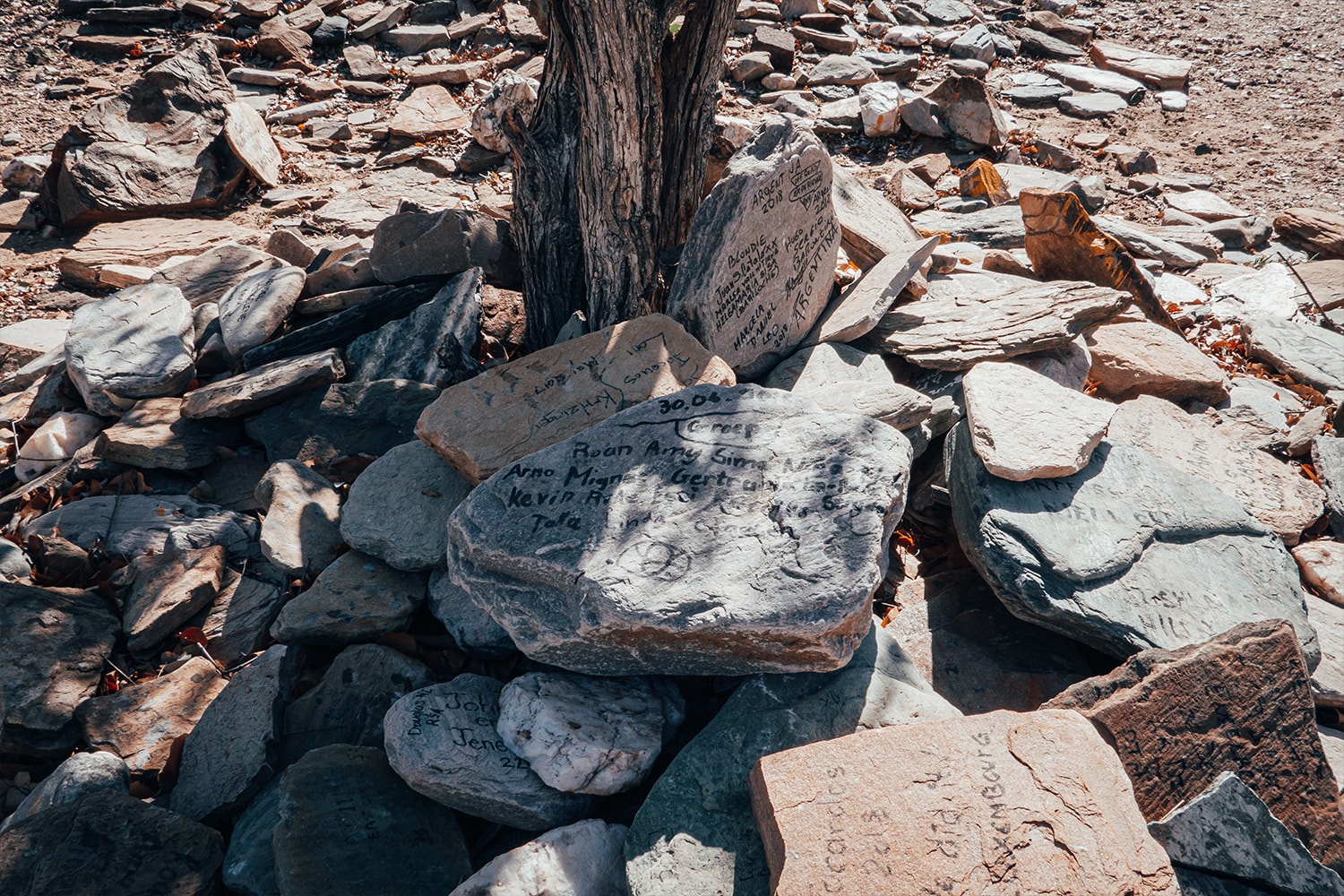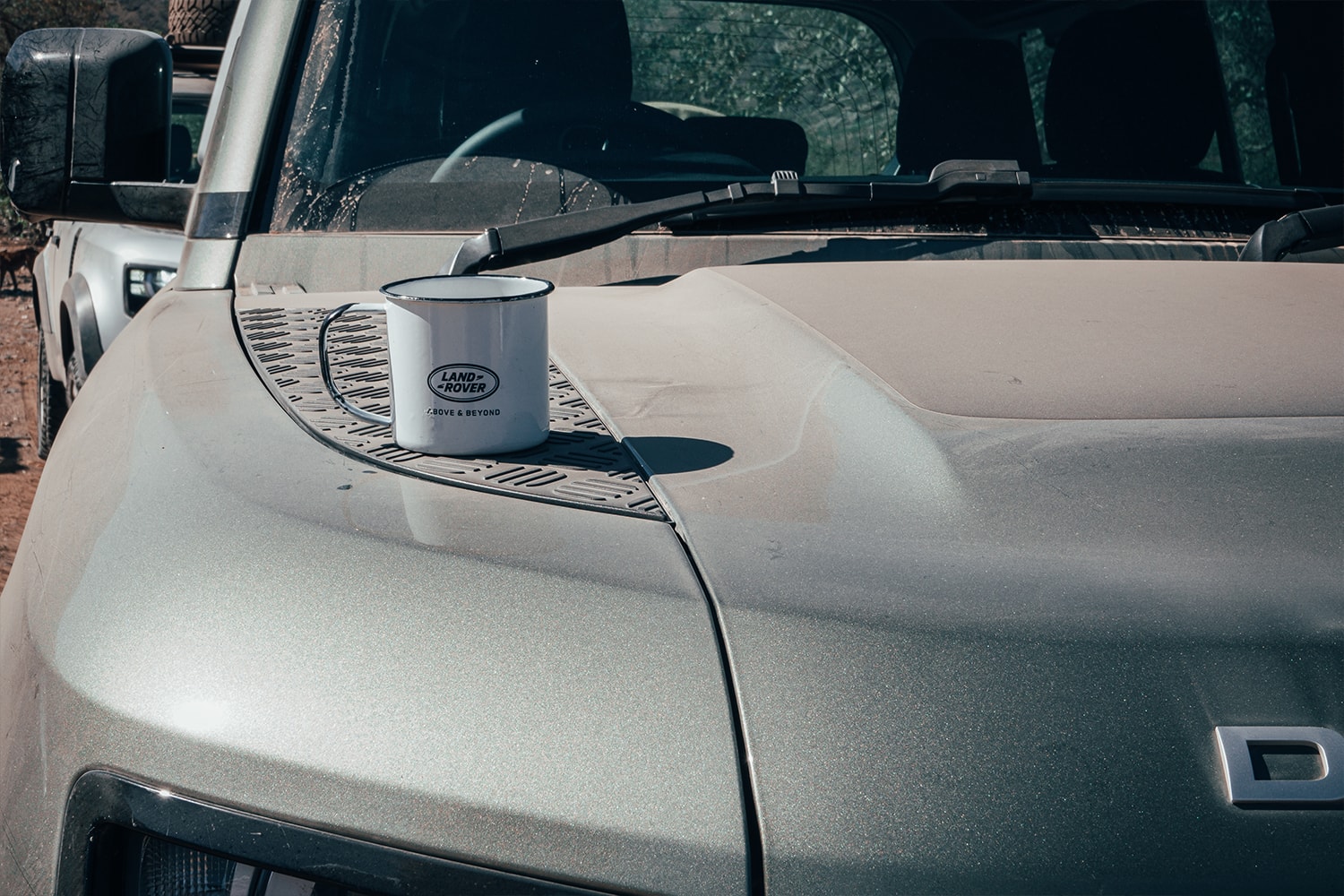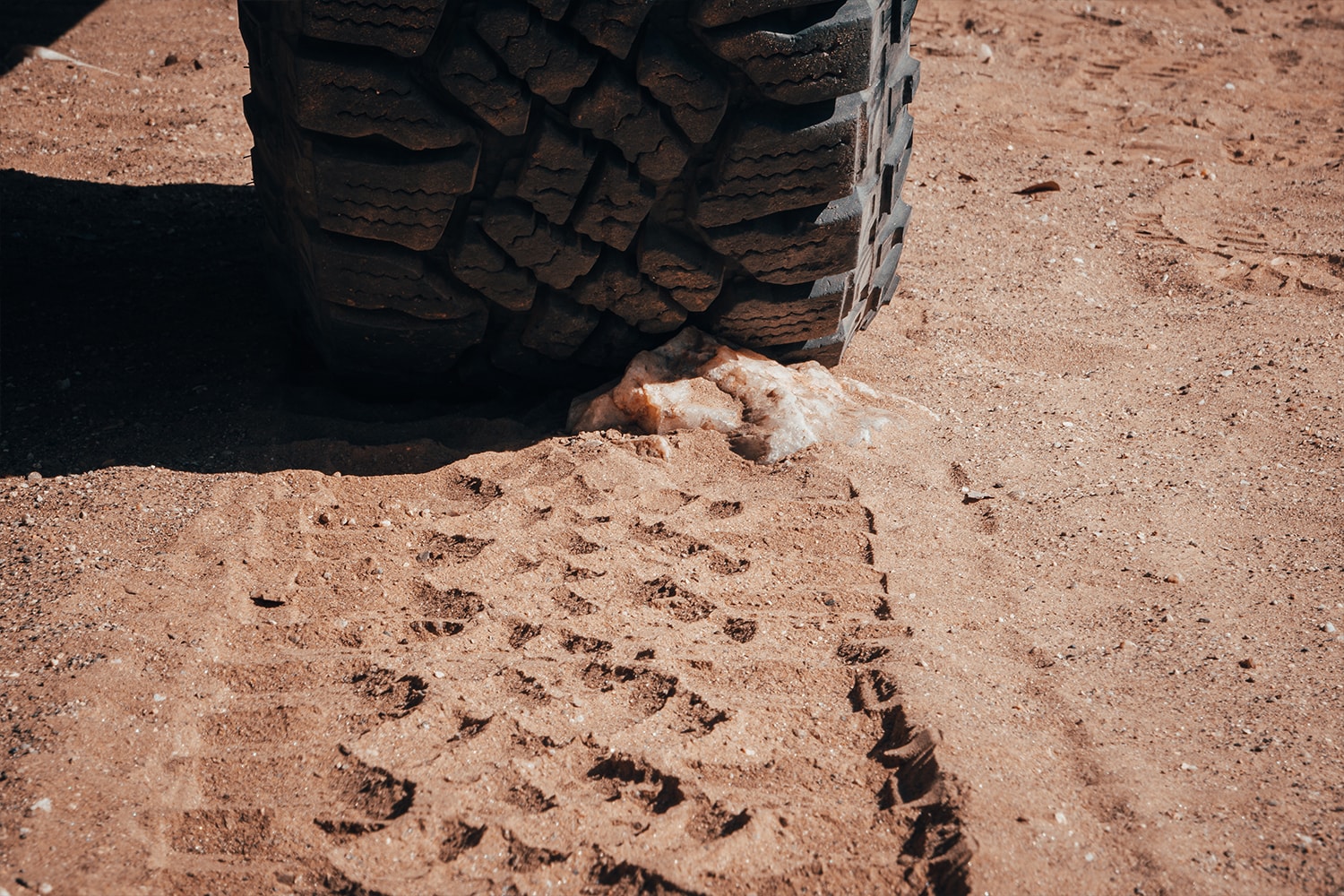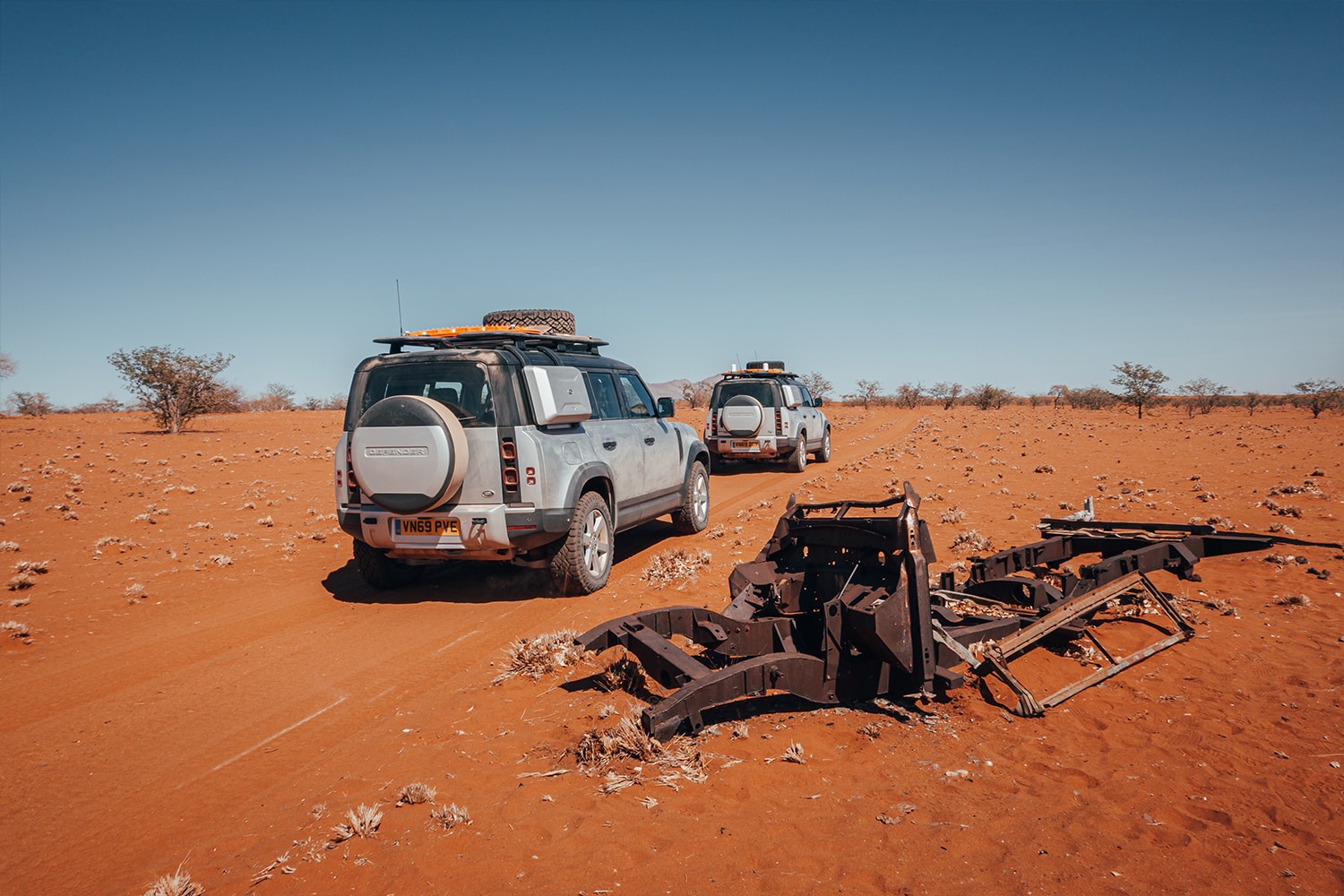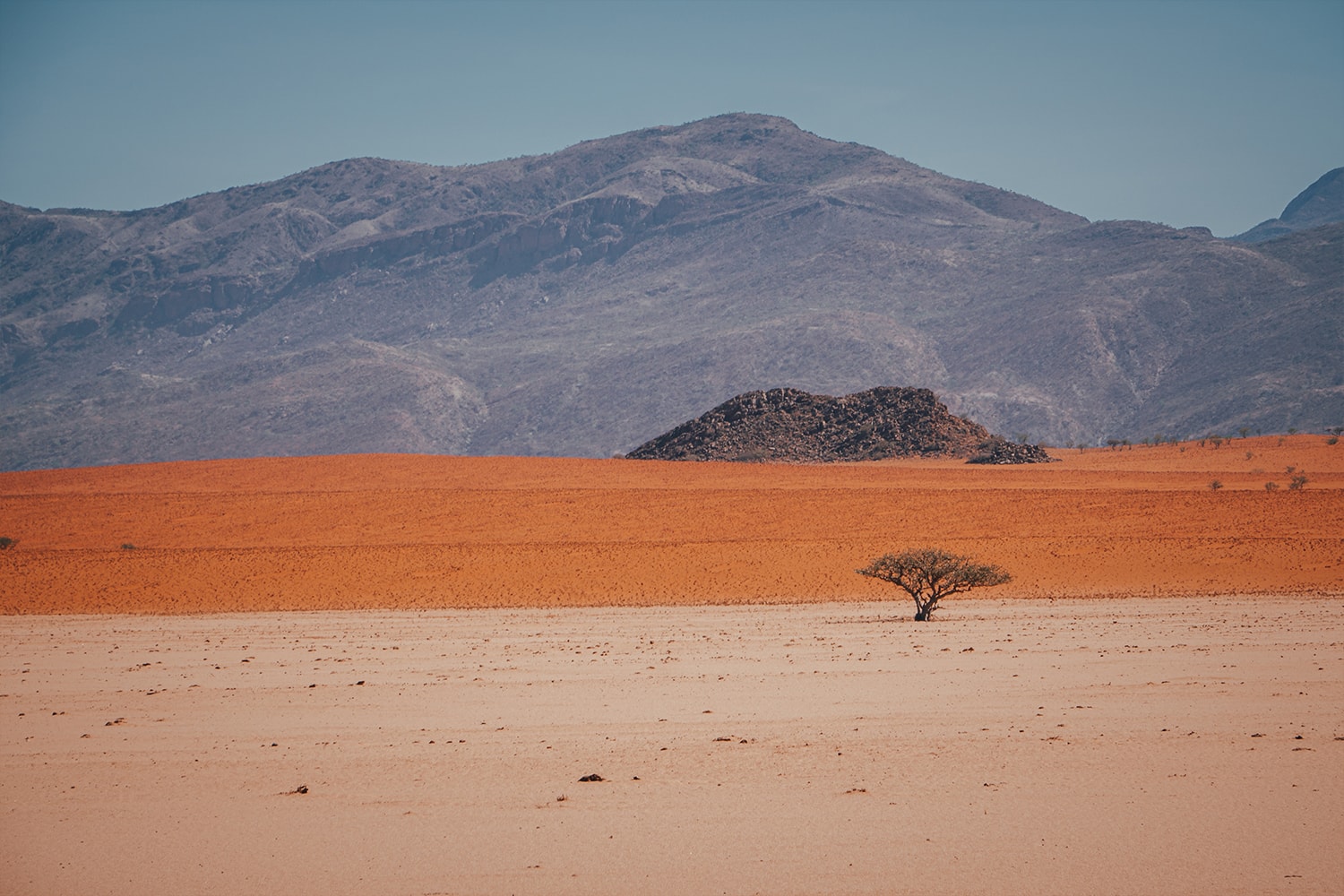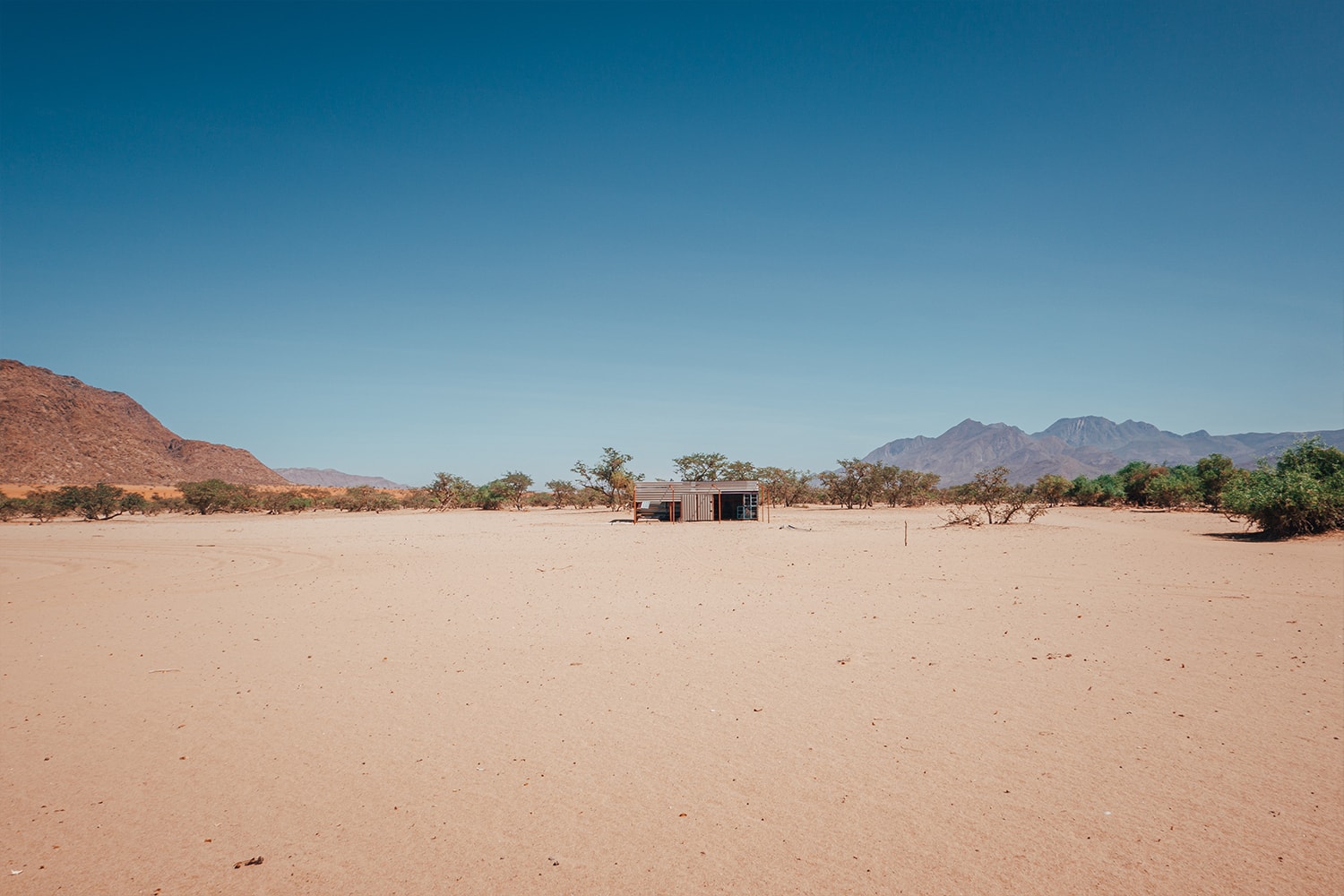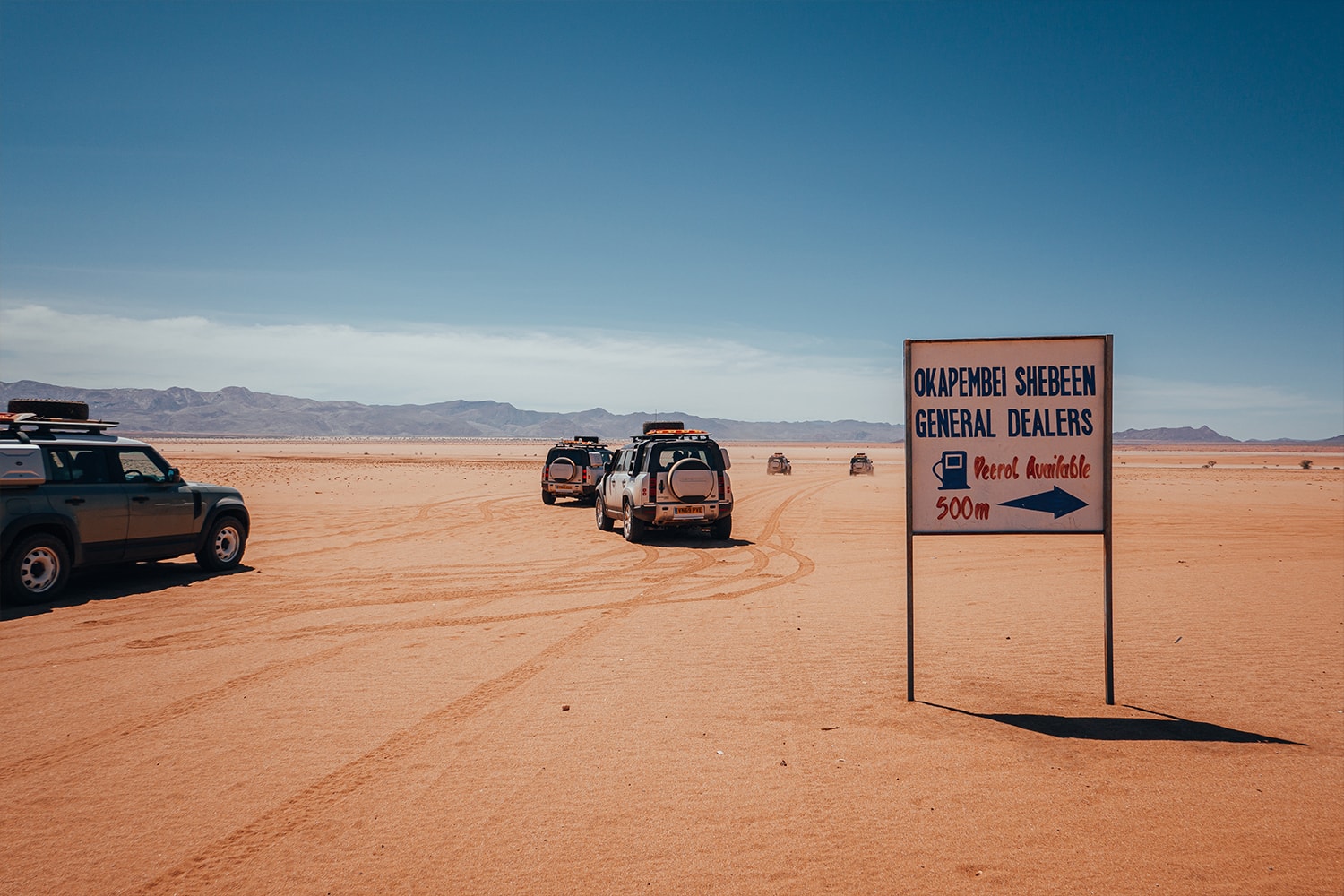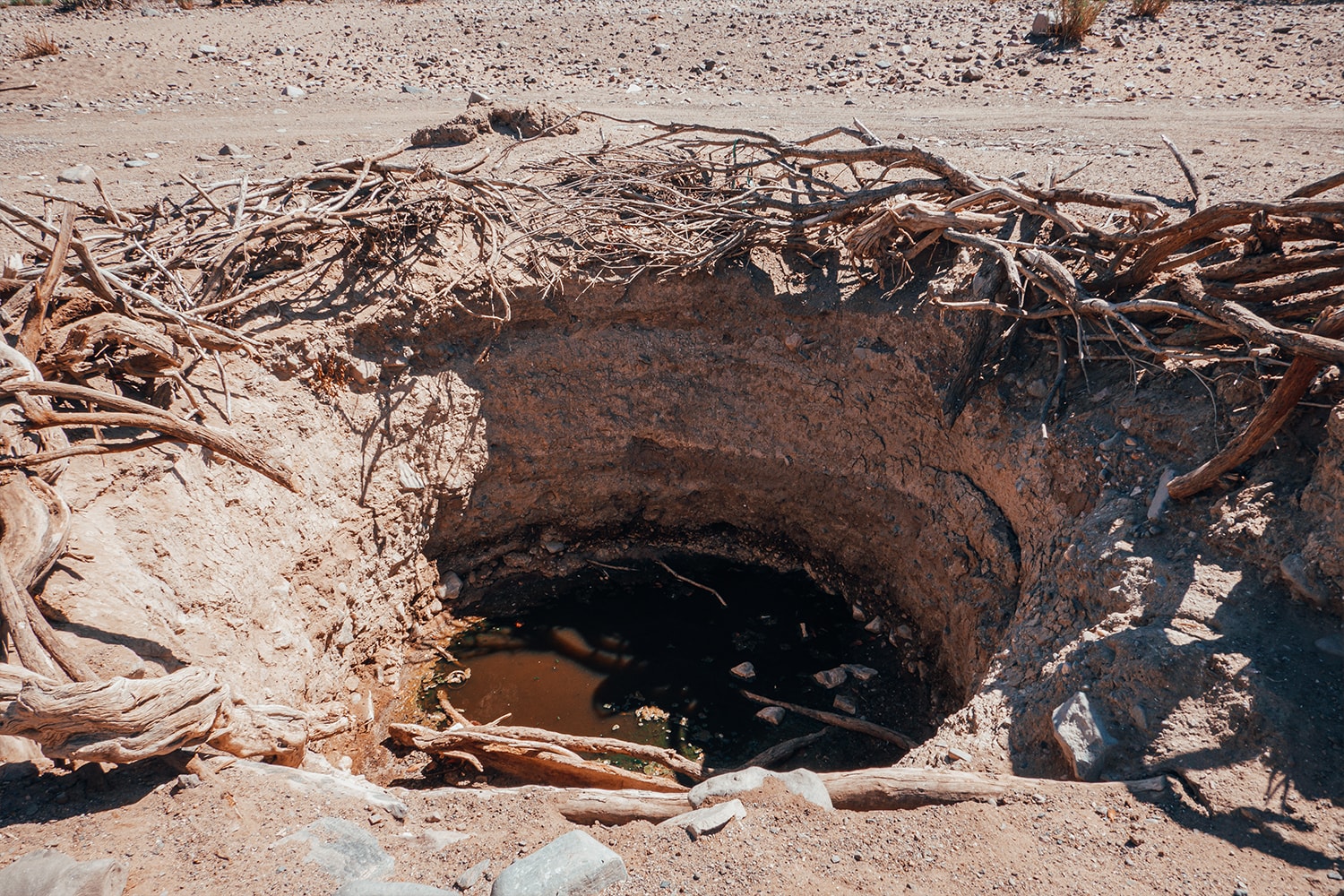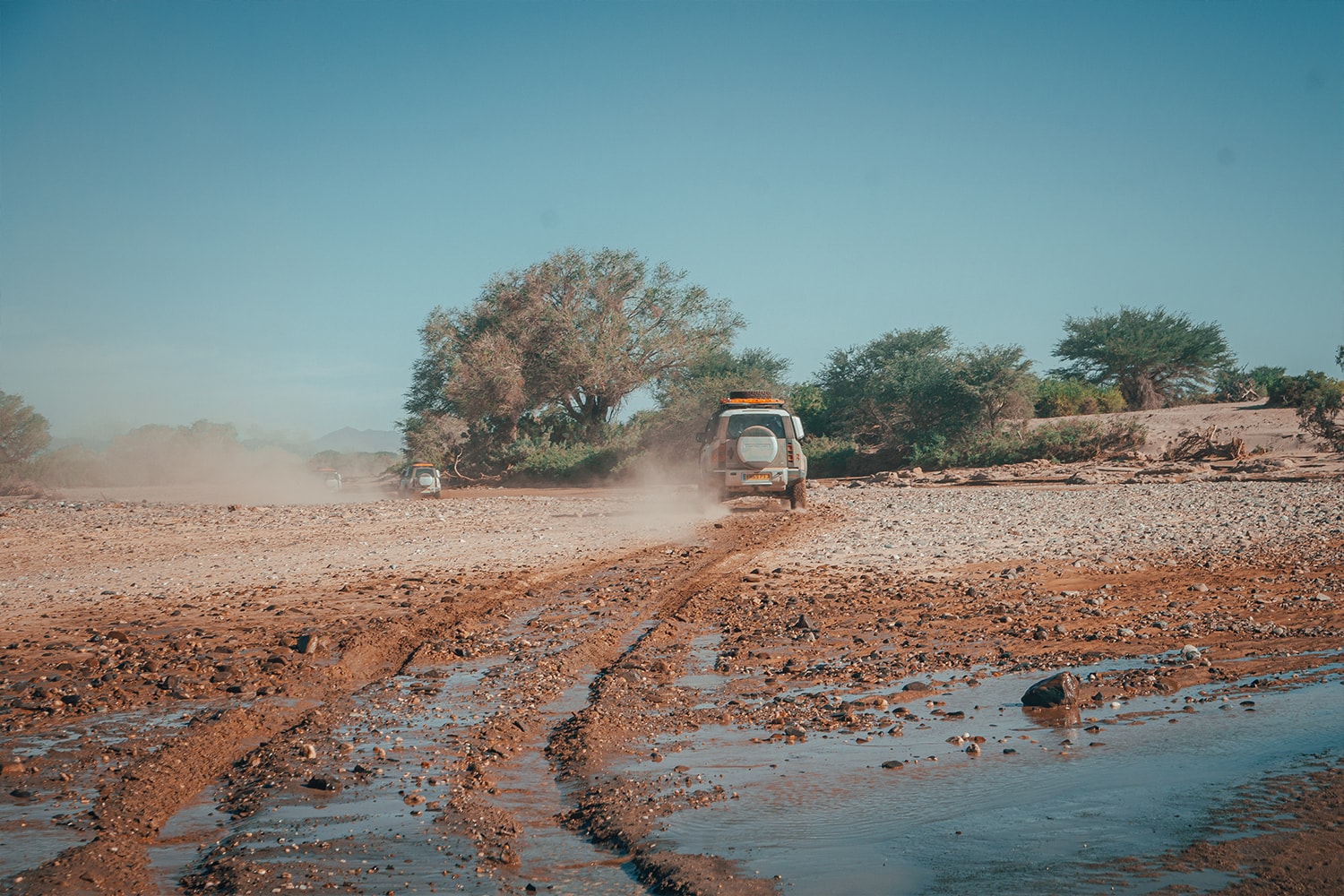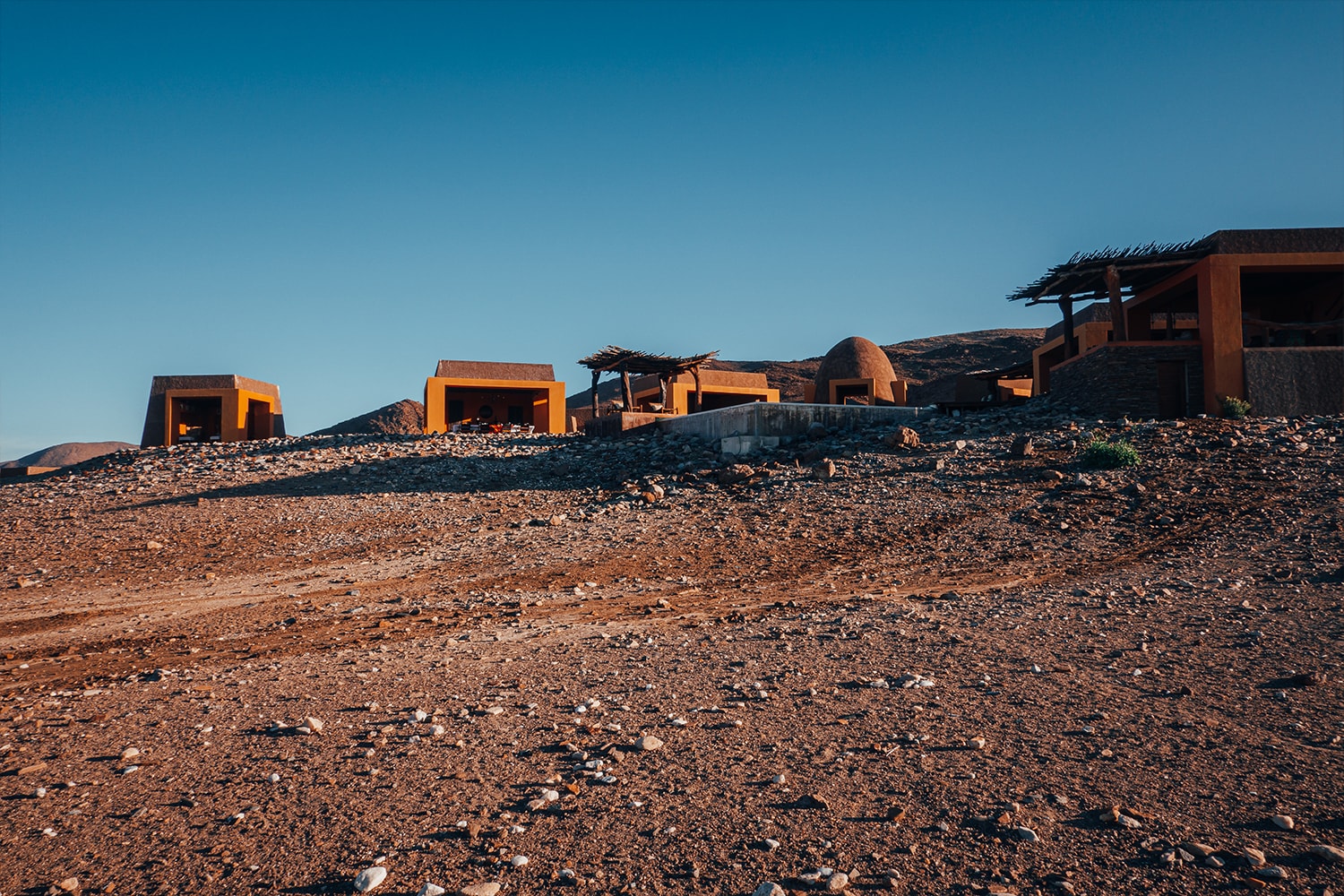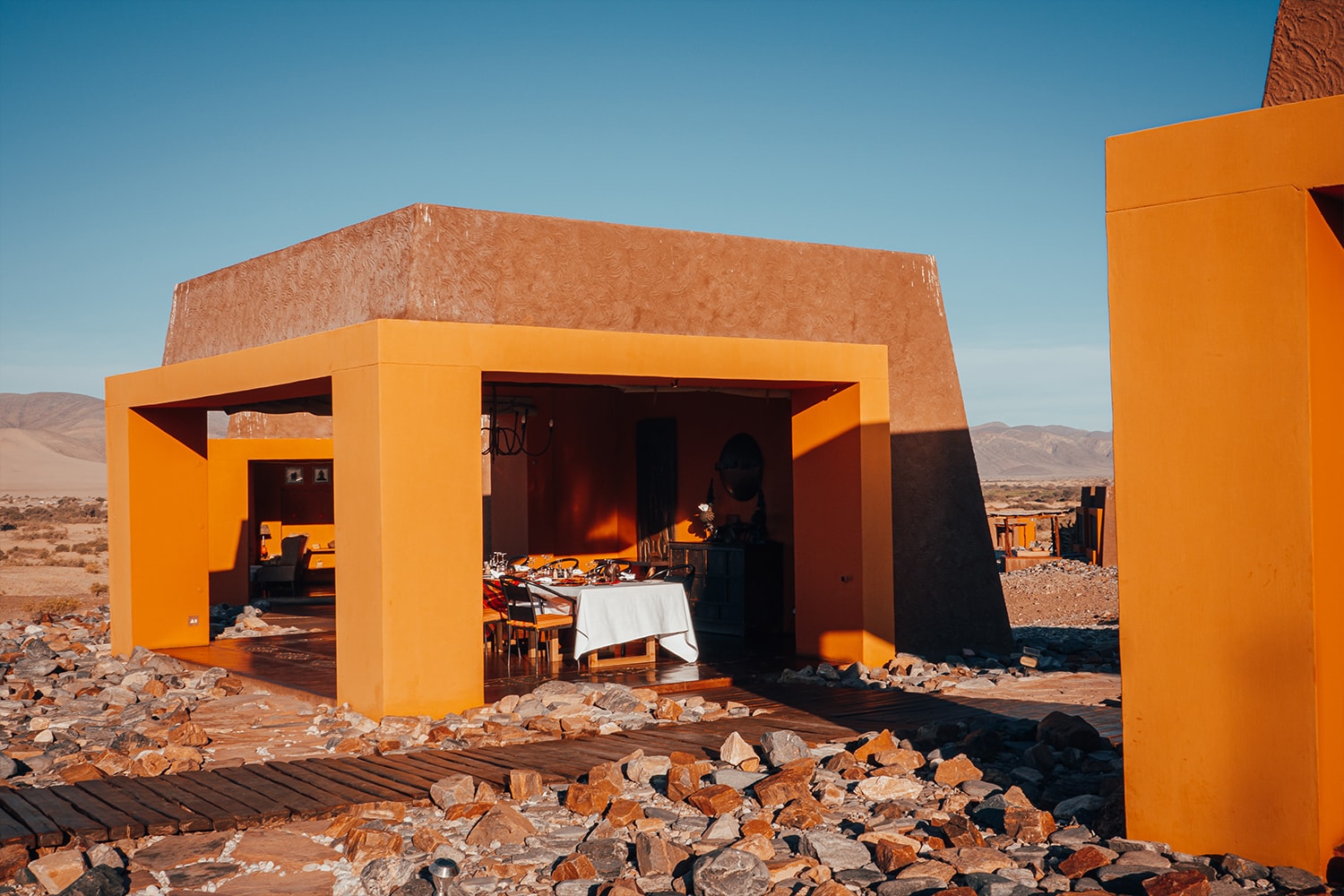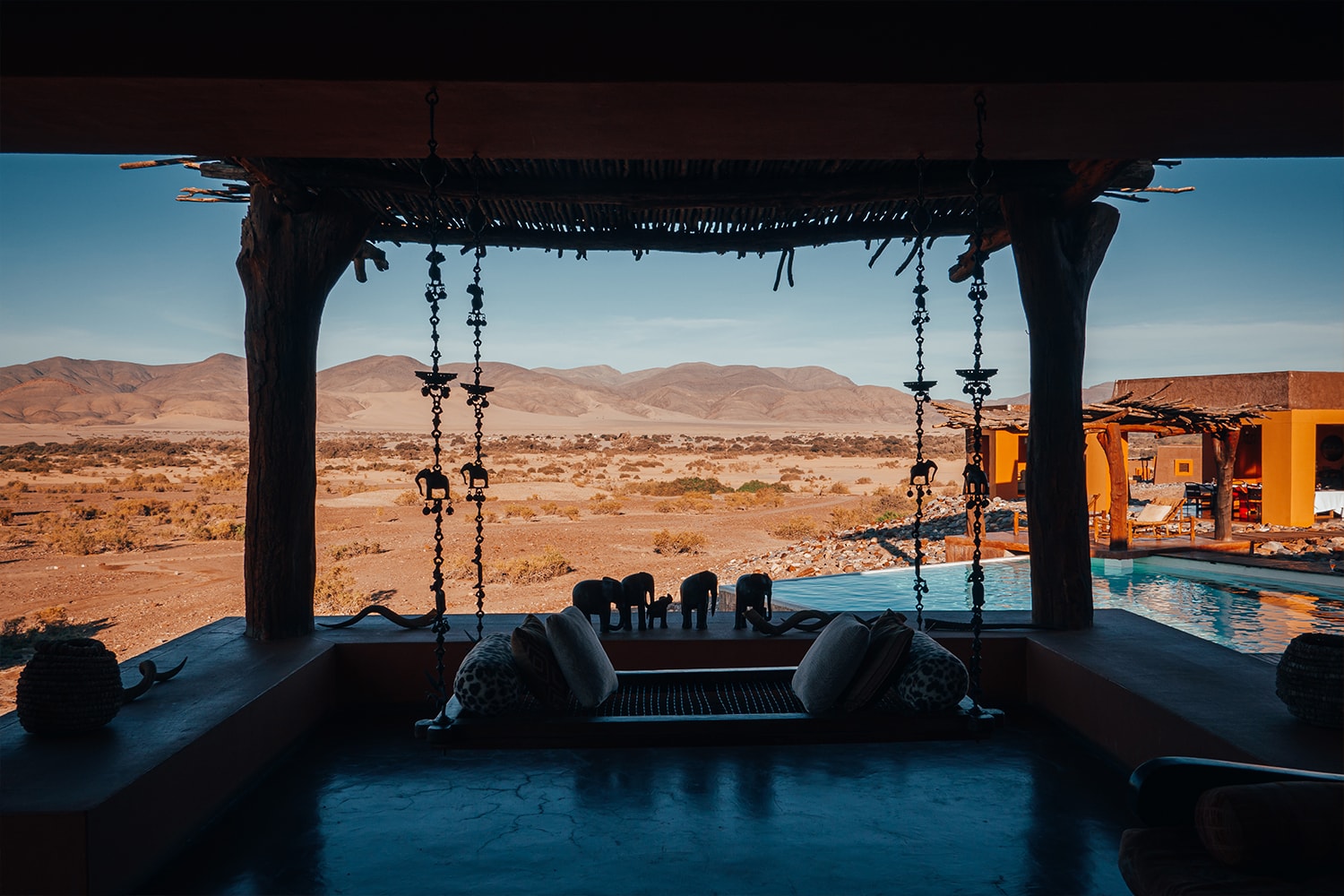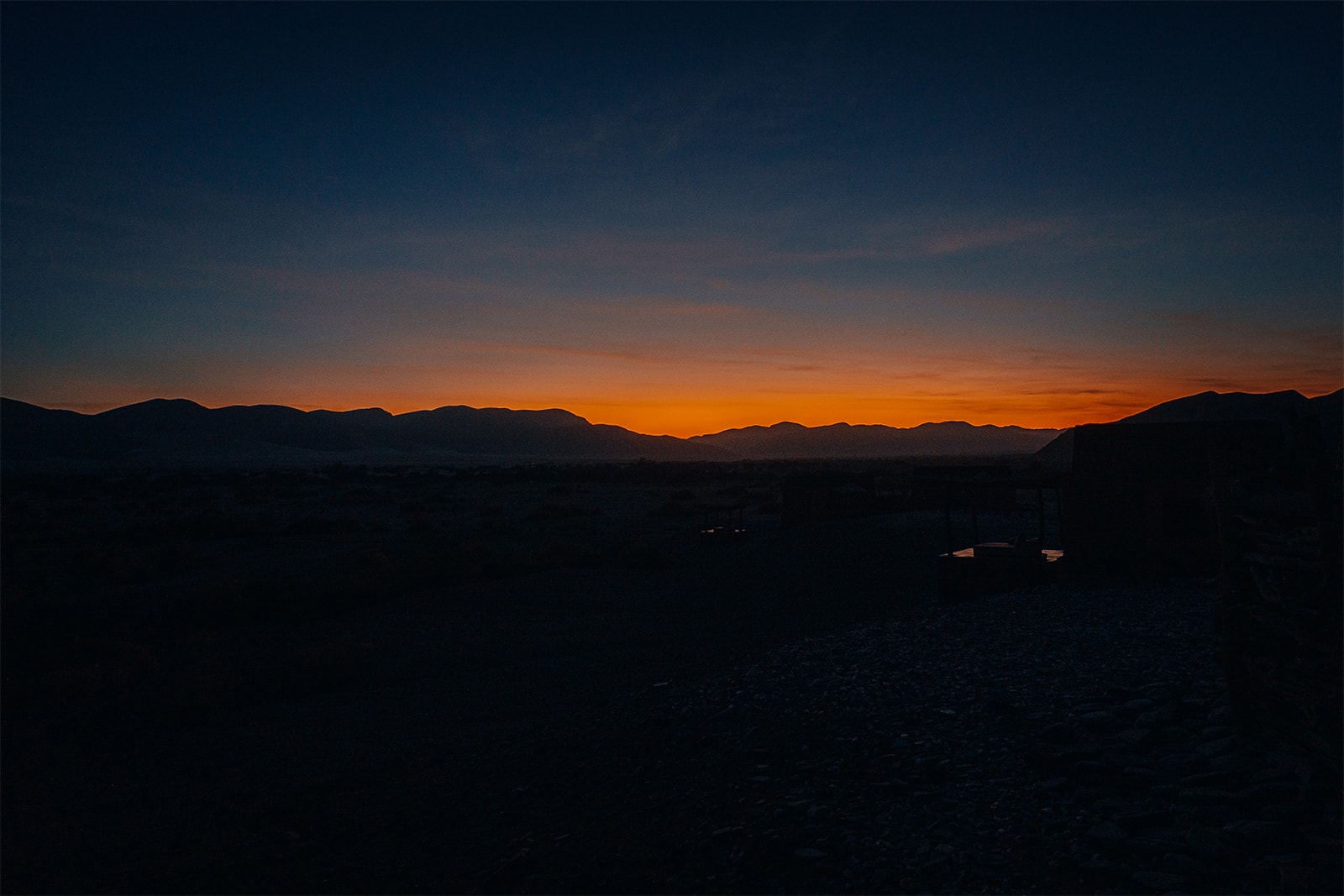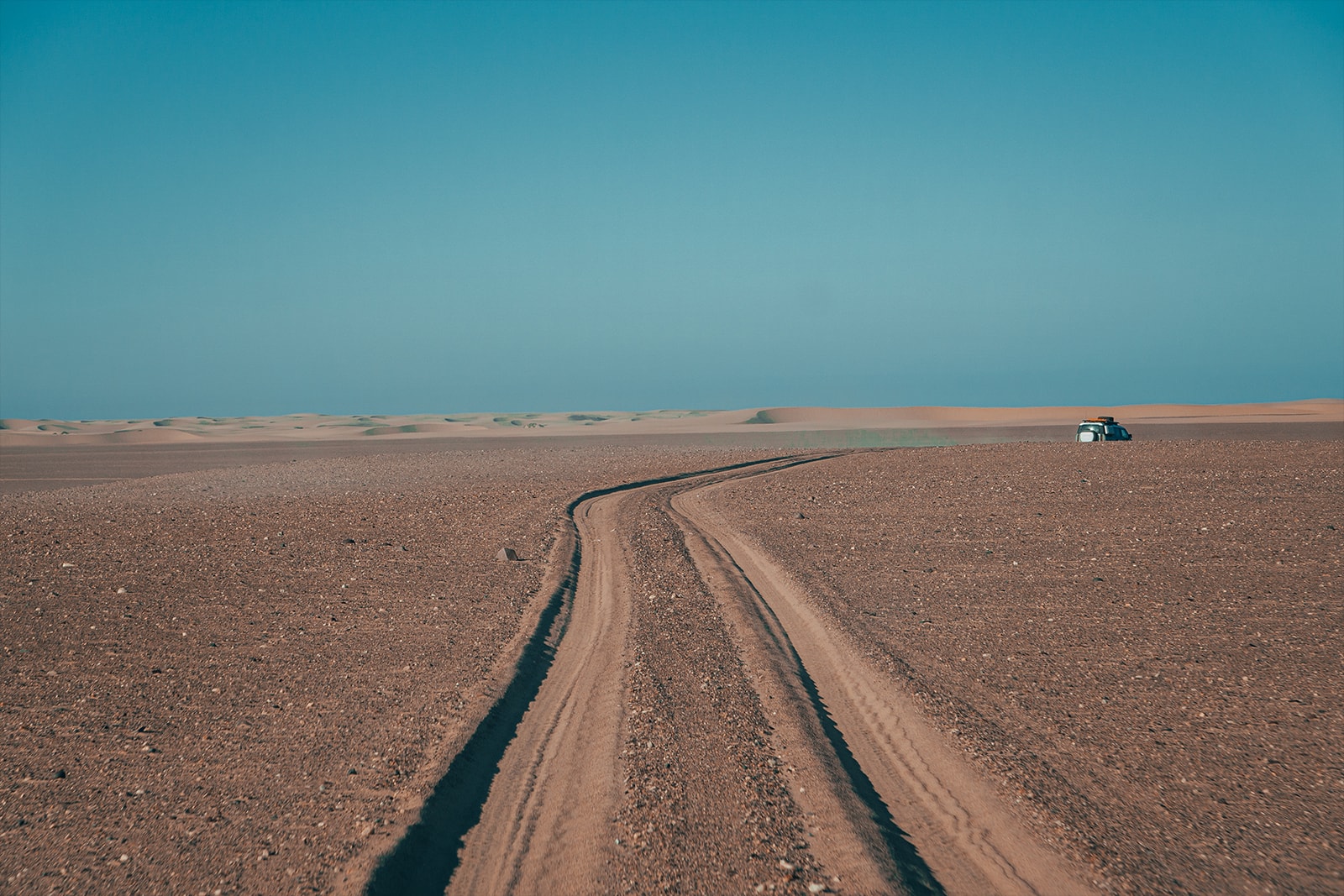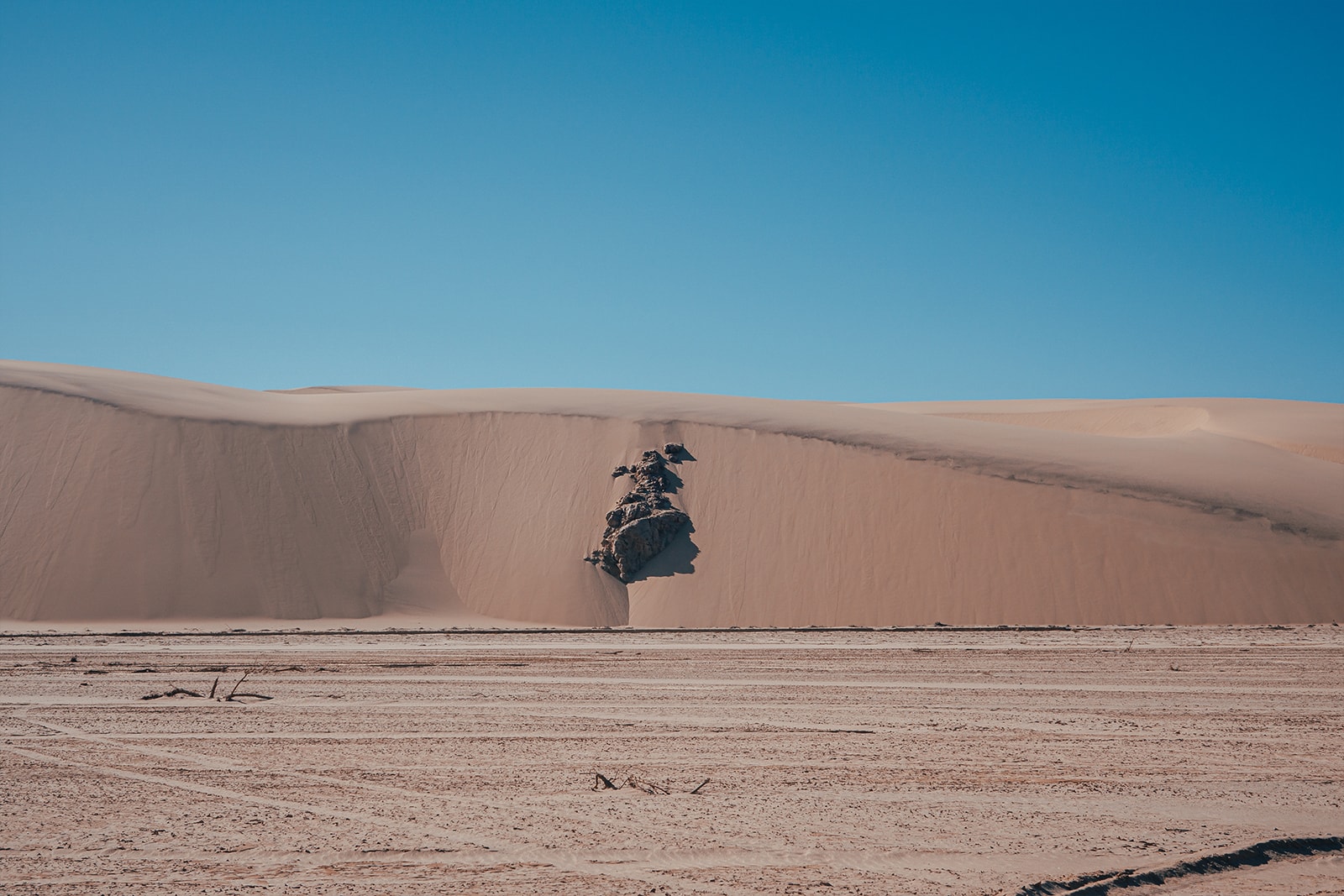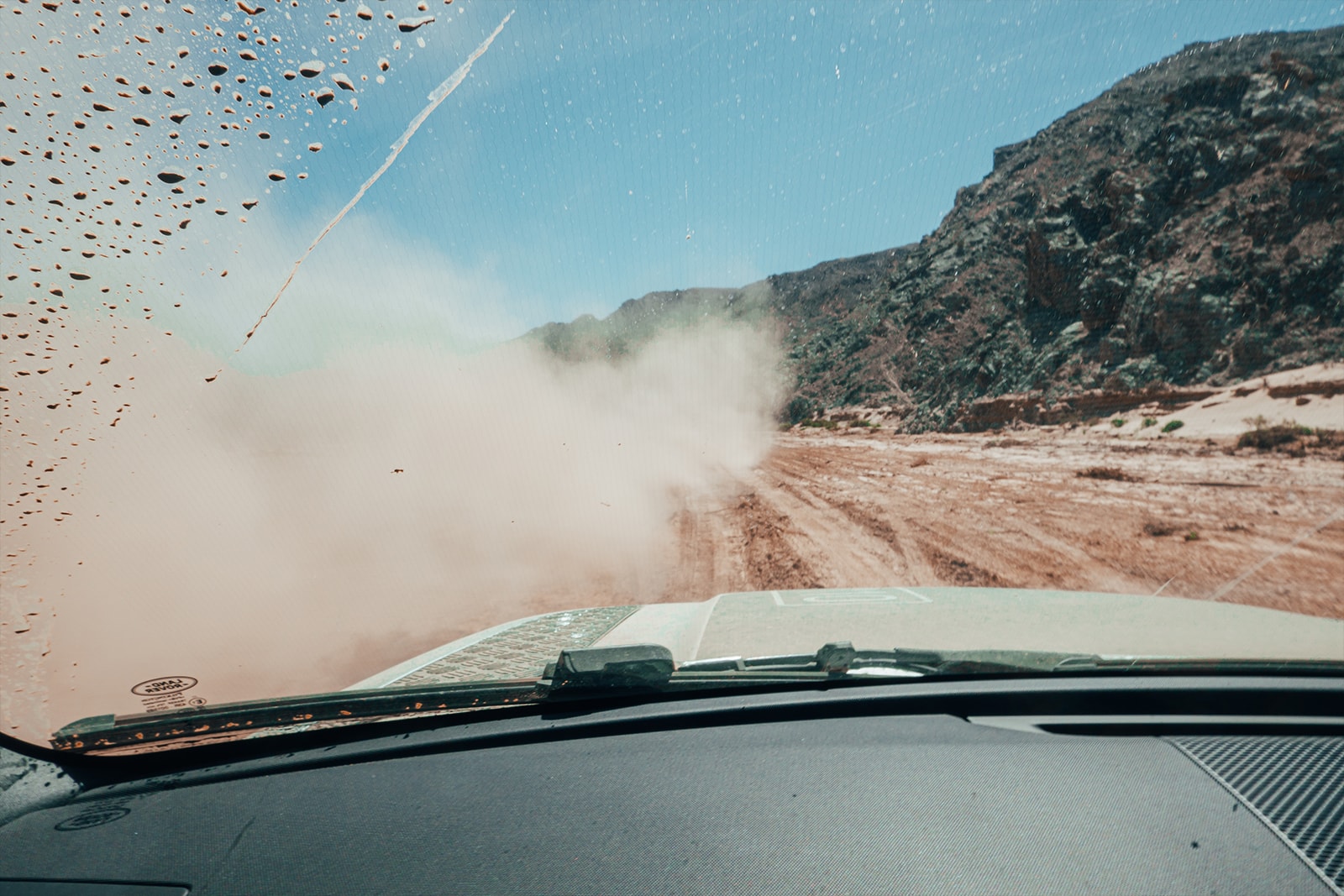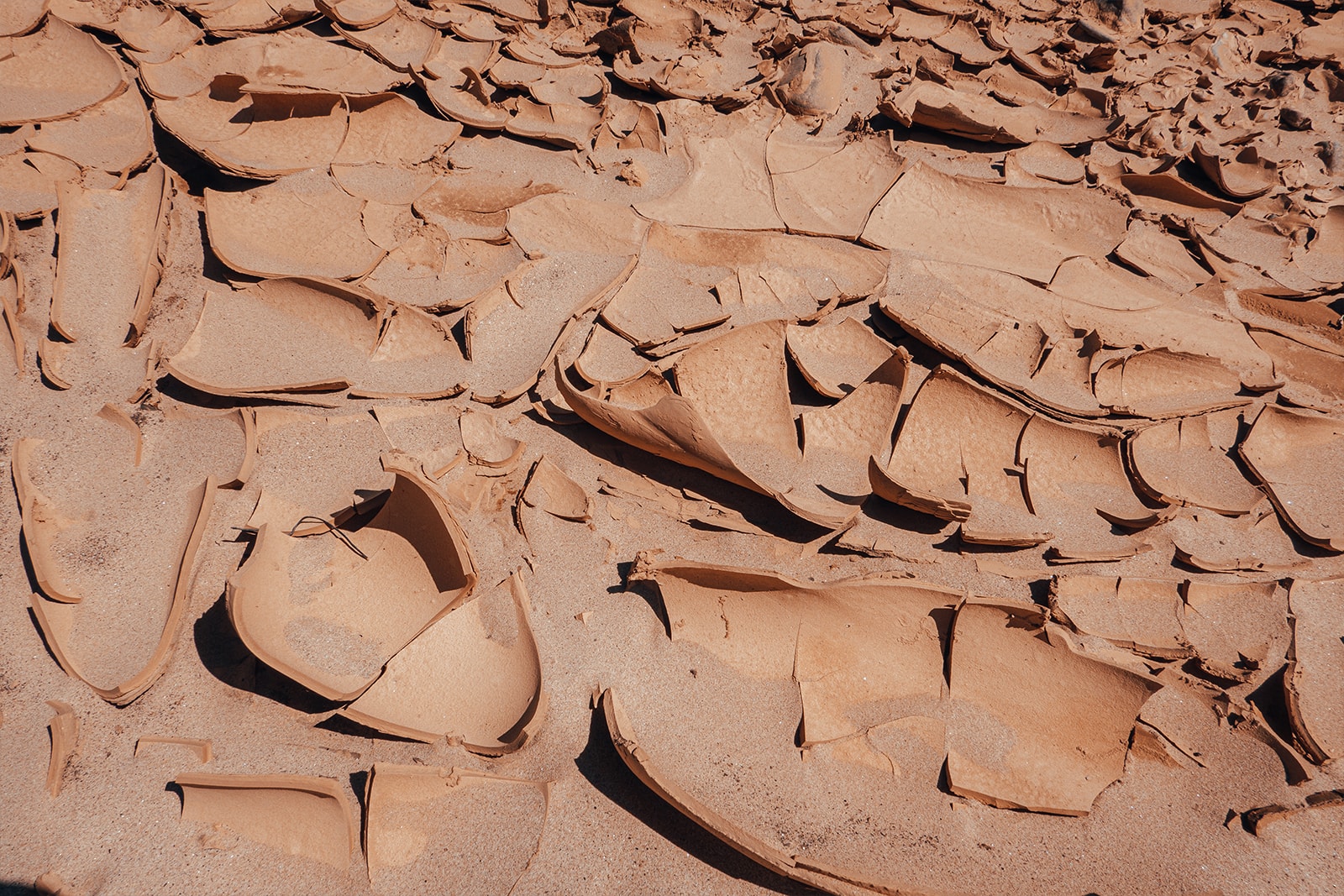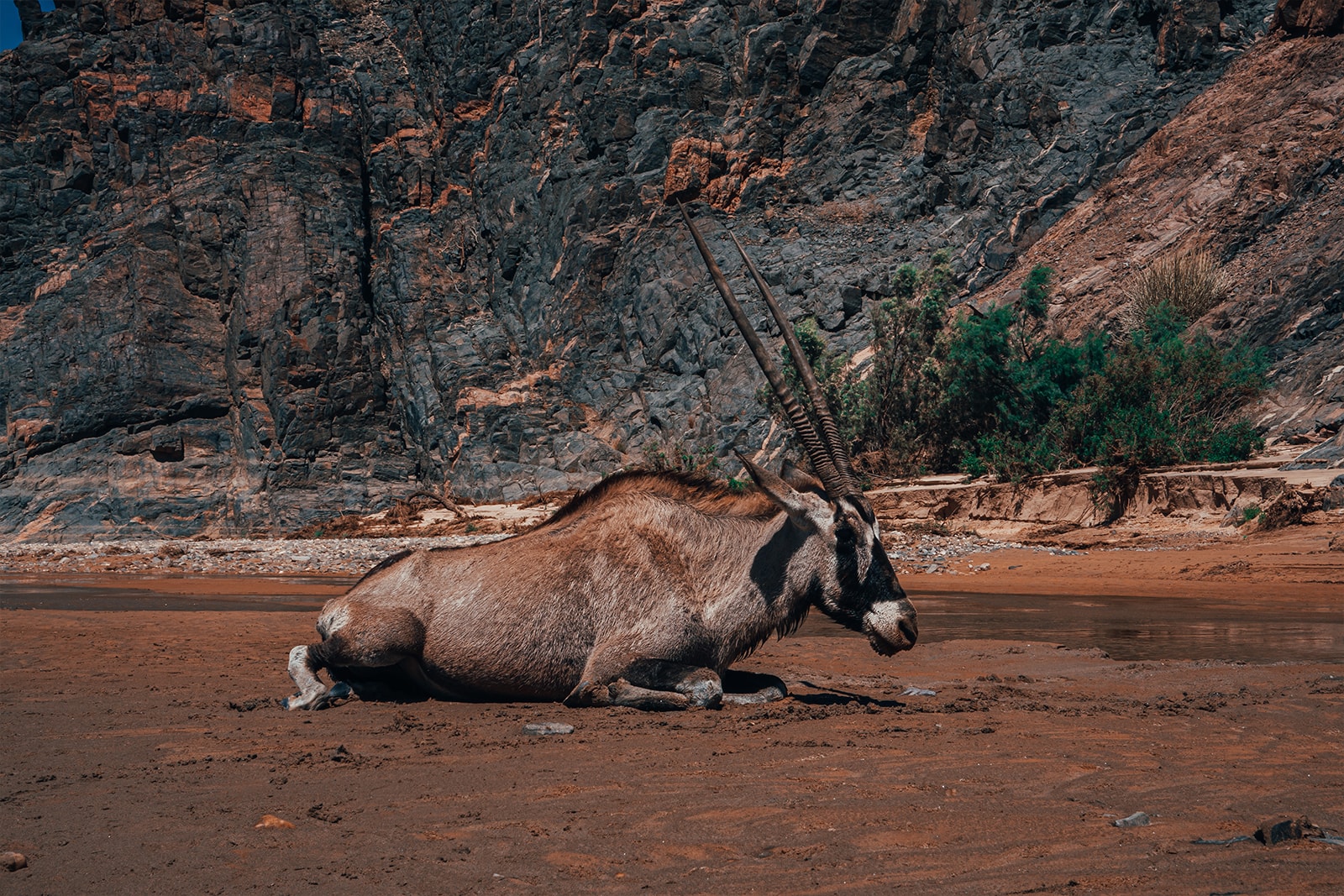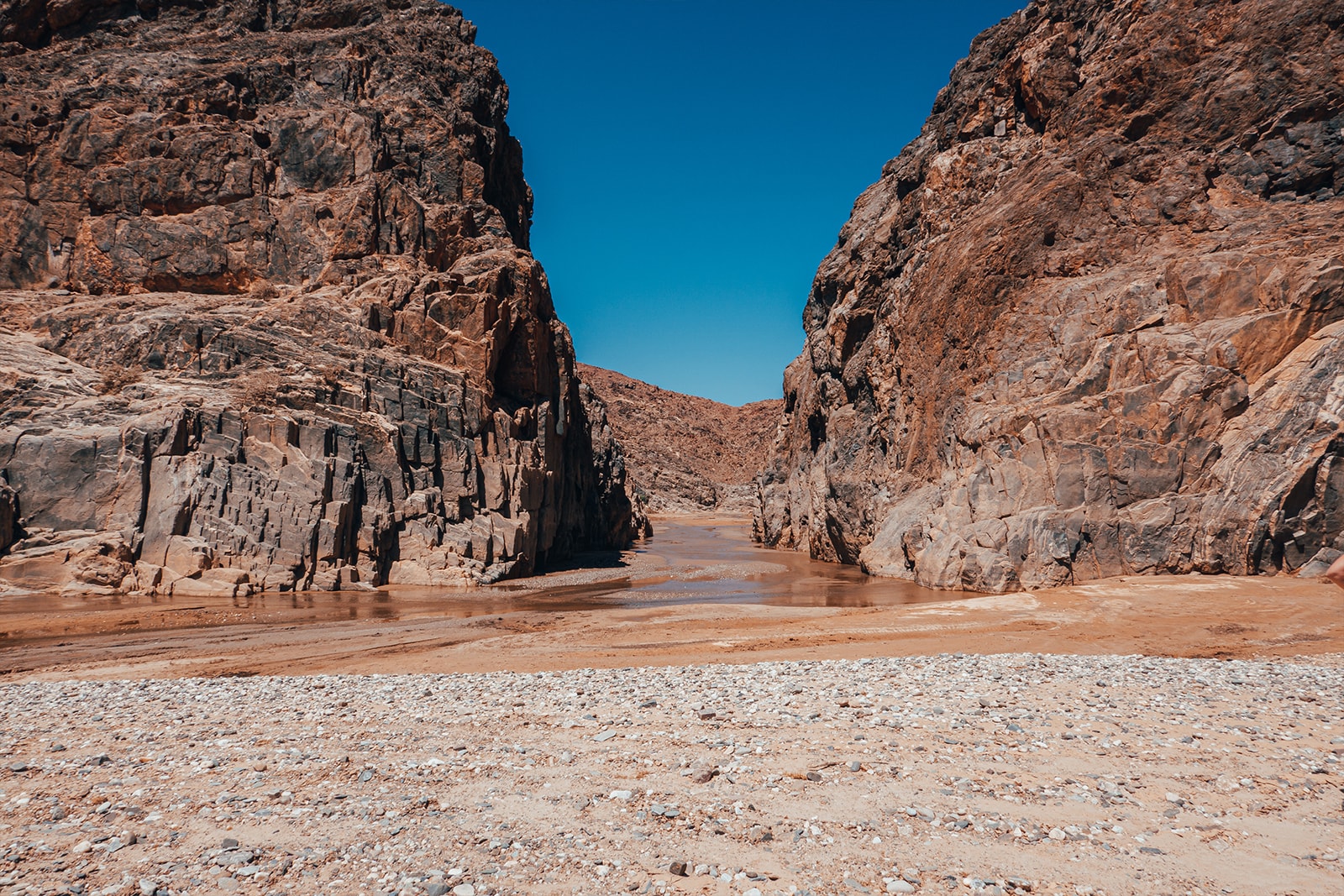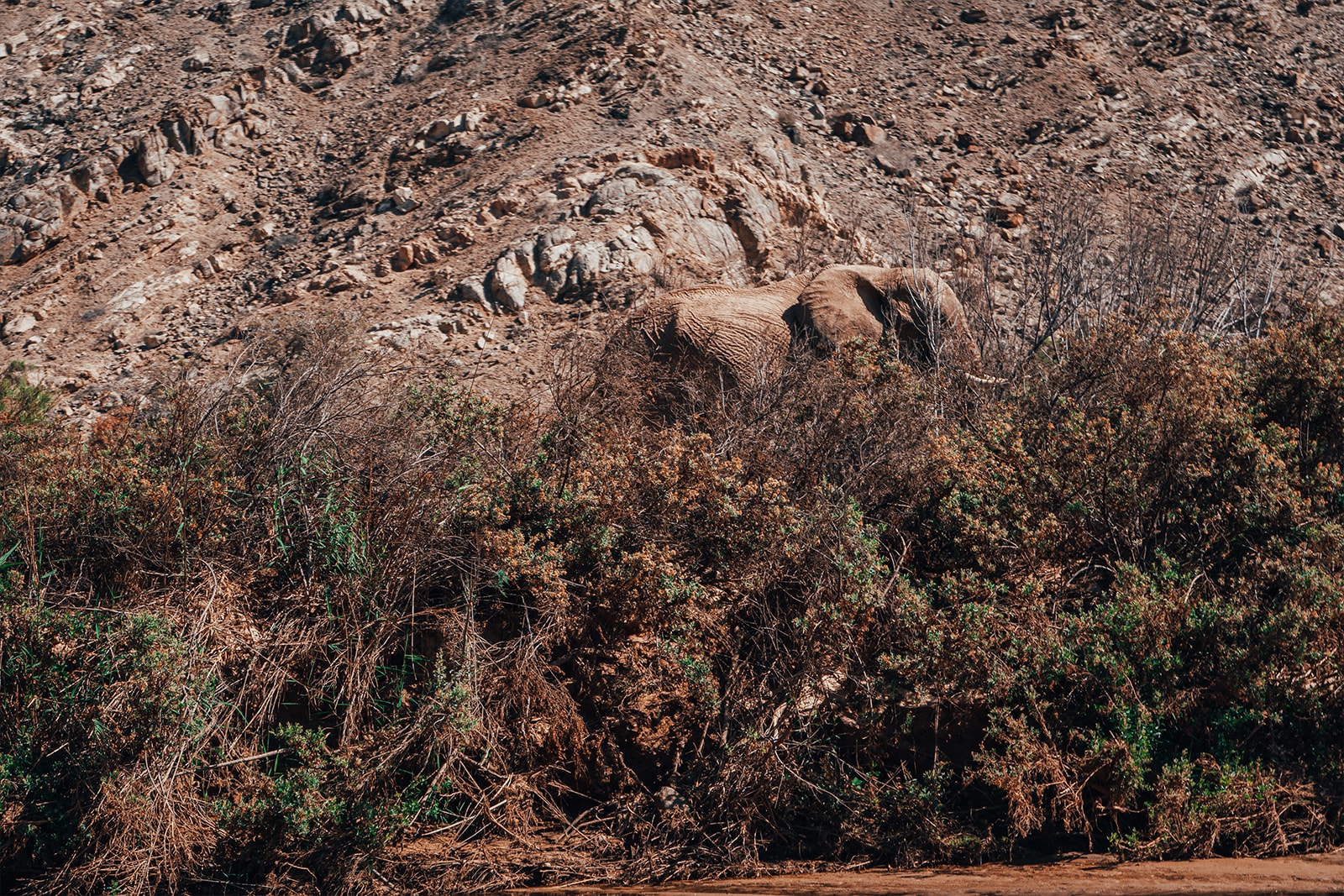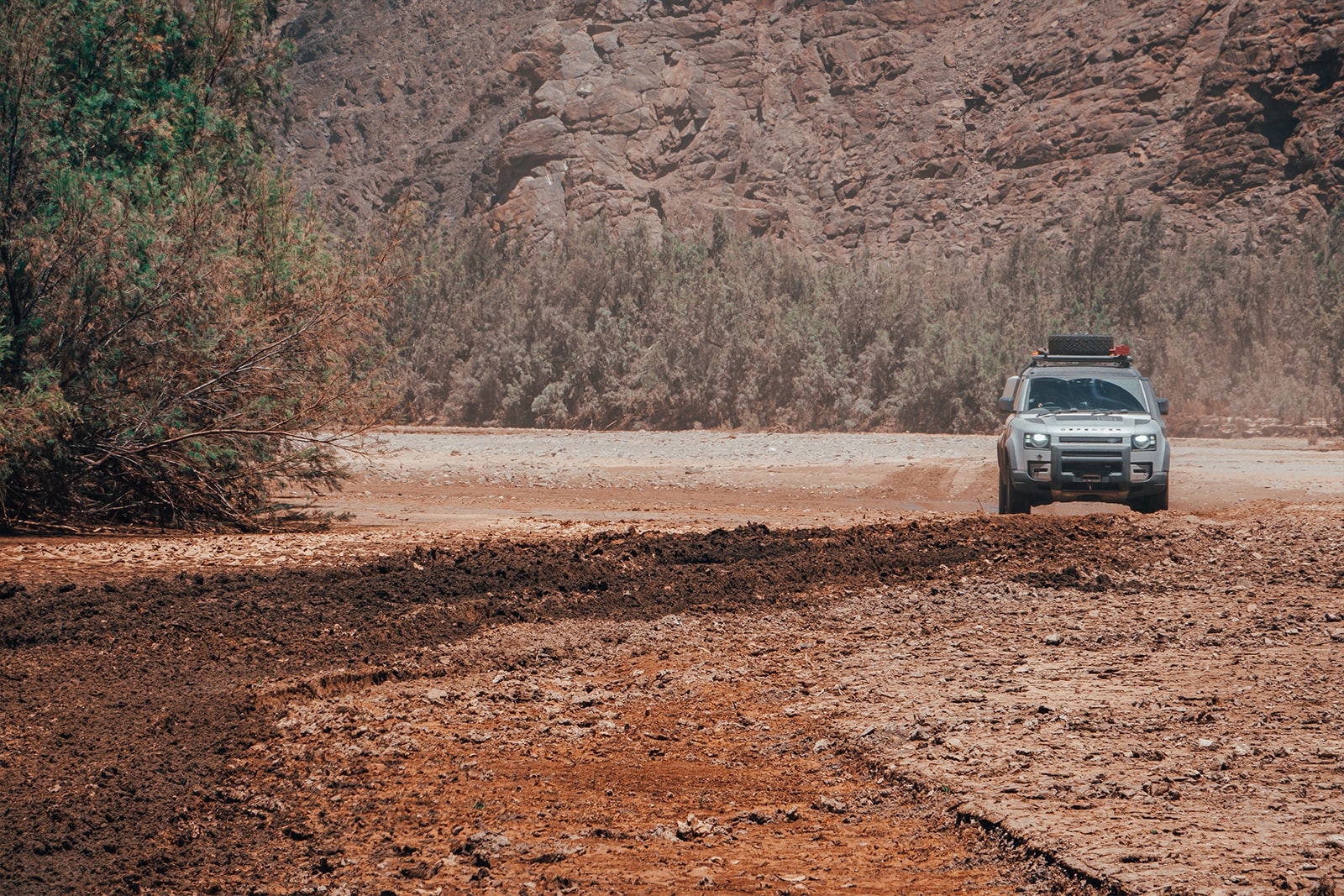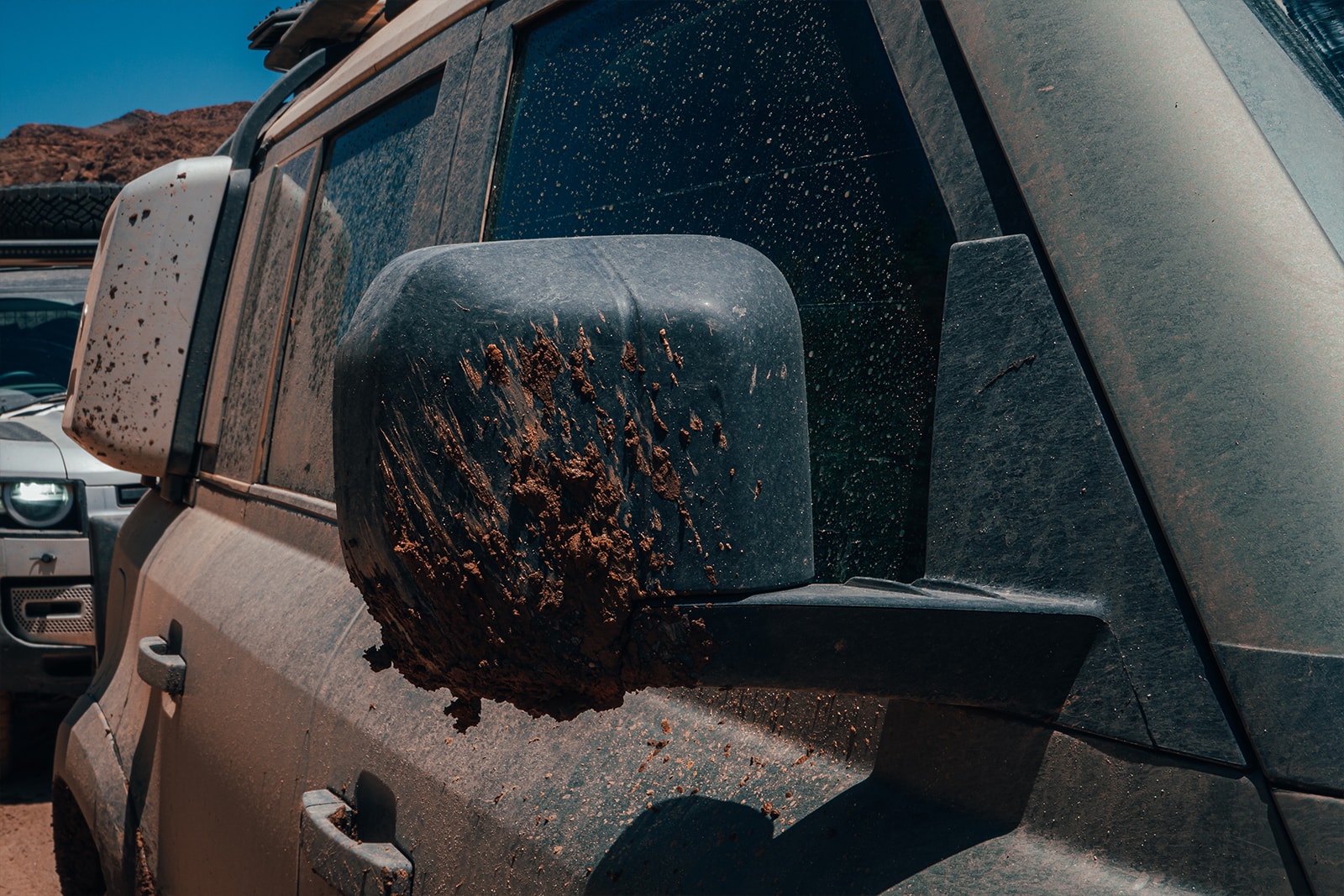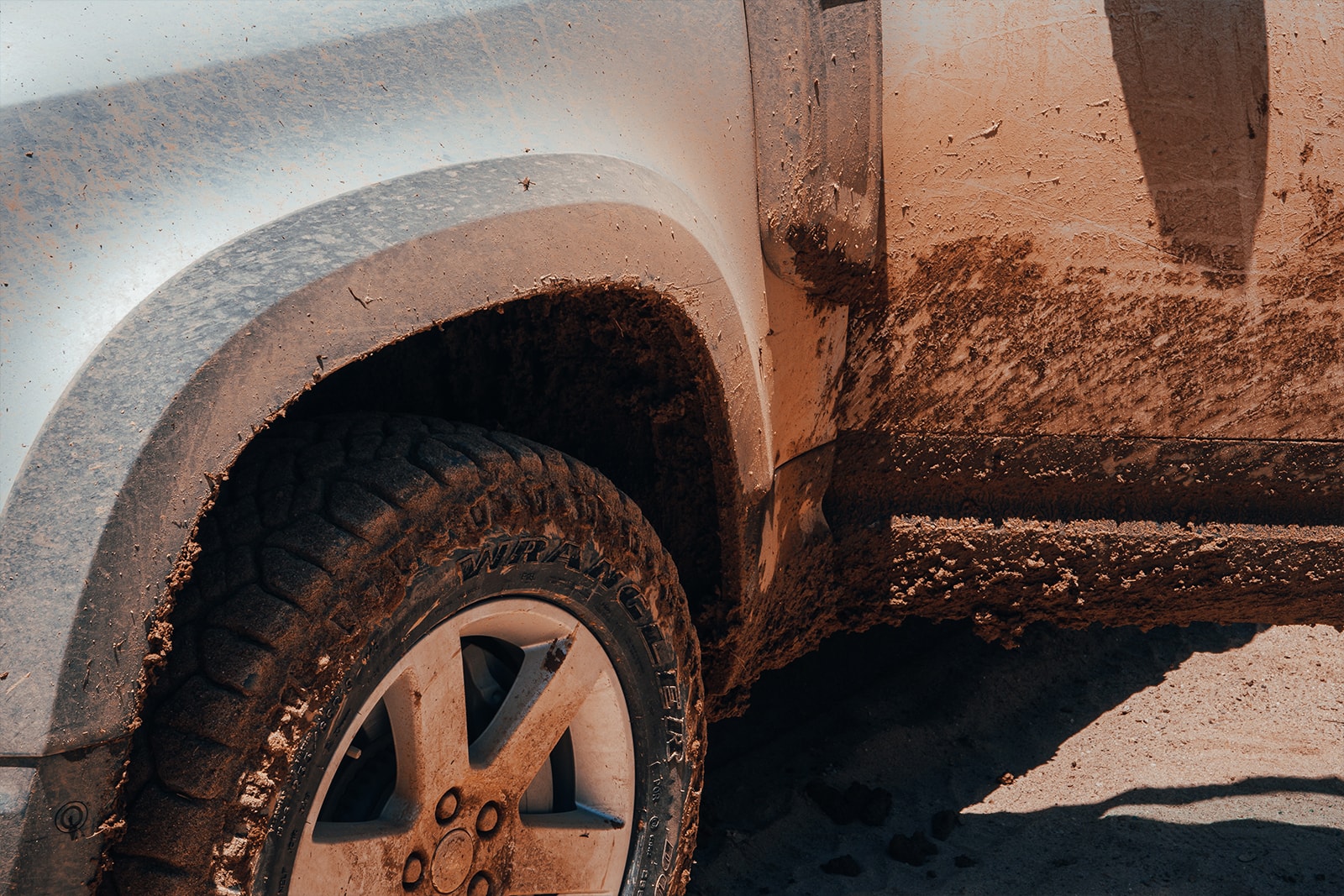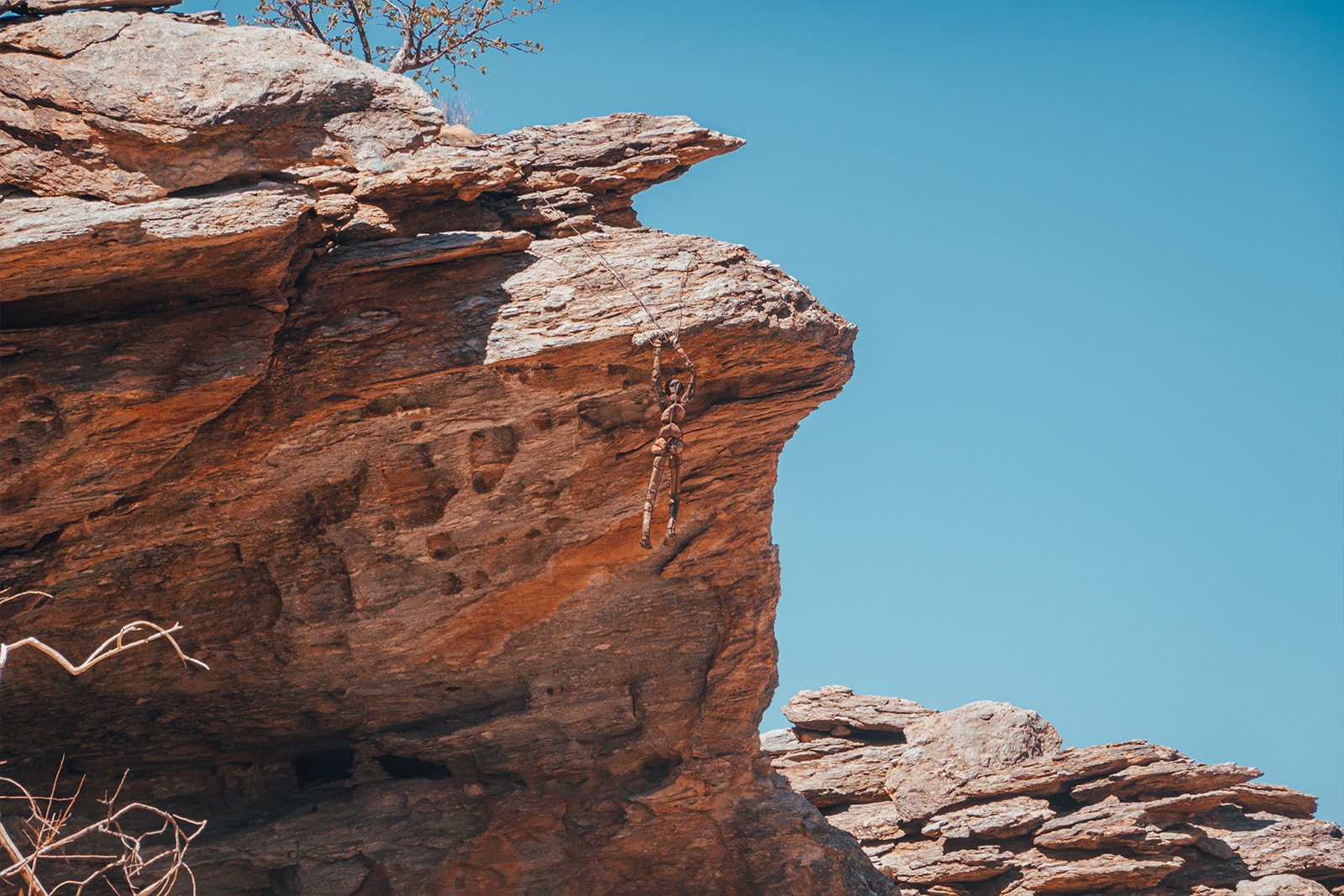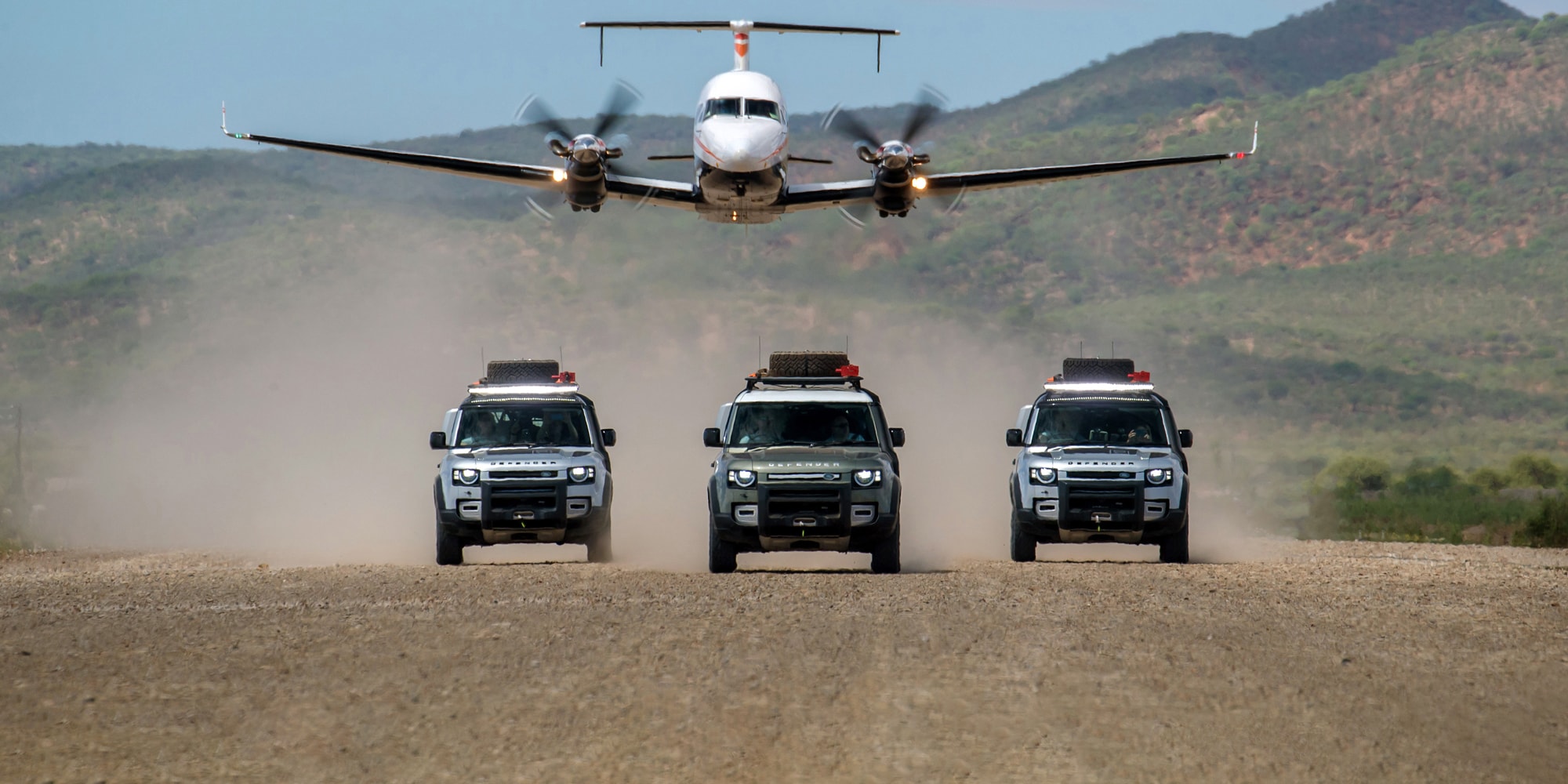

The creation of the New Land Rover Defender was no easy task. Having shared similar design cues across past generations for over 65 years, it would be hard for even the most uninformed driver to not recognize the Defender’s iconic body-on-frame, boxy silhouette. With over two million Series and Defender models built since its inception in 1947, not to mention its service to the British Military, the Defender not only is a British cultural icon, but its esoteric history has garnered a cult following across multiple generations of off-road vehicle enthusiasts.
While purists continue to harken to the days of the ’90s Defender, as it preserved a lot of the body styling from the classic Land Rover One-Ten/Ninety (a direct descendent of the legendary “Series” generation), it was inevitably time for an update. Not factoring increased pressure from new emissions regulations and lack of crumple zones, it would be an injustice to the next generation of consumers if Land Rover rested on its laurels to create a facsimile of something that’s already been on the market for some 30 years.
Hints of the New Land Rover Defender could be seen as early as 2001 when Land Rover unveiled its DC100 (Defender Concept 100) at the Frankfurt Motor Show. Its exterior’s soft edges were met with mixed reviews but ultimately was a great exercise for the British automotive brand as the feedback aided tremendously in creating the final product we see today.
It is undeniable that the New Defender looks radically different than the last generation, but like with most things, when it comes to change, getting used to newness comes with time. What should concern consumers most is the New Land Rover Defender’s capability. Looks aside, does the New Land Rover Defender honor its predecessors’ off-road legacy? Is this really a Defender for the 21st century?
Looking to answer these questions, Land Rover invited a handful of guests to find out firsthand if the off-road SUV merits the “Defender” badge. Taking place in the vast landscape of Kaokoland, north-west Namibia, I set out on a three-day drive through the scorching deserts, rocky mountain passes and muddy river beds in one of the wildest regions of Southern Africa.
Landing in the largest city and capital of Namibia, Windhoek, we are given the rundown of what to expect in the coming days. The city is home to roughly fifteen percent of the population of Namibia and sees architecture and street names far different from the rest of the country due to its past history as a German colony. Fishing, mining, and agriculture rank in as the biggest industries of Namibia, but in recent years, tourism has been inching into the number three spot. You’ll notice that a lot of the cars and trucks here are in white, and that’s because the country averages 300 days of sunshine annually. We were also told that Namibia was experiencing a five-year high for rainfall so vegetation and rivers were very much alive.
DAY 1
From Windhoek, it was a one-and-a-half-hour flight to the city of Opuwo. Before landing, the pilot buzzed the airstrip to make sure no children were playing near the area. We then circled back, landed, and were greeted by a fleet of New Land Rover Defenders. From here we drove to Opuwo Country Lodge and were briefed on the directions to our first stop, safety precautions, and were given supplies. After a cup of coffee and a helping of biltong, we set out.
We were out of the city center in only 15 minutes. That was the last time I would see tarmac before returning back to Opuwo. We traveled in a convoy, one-by-one, each Defender keeping a safe distance away from the dust clouds kicked up from the car in front, yet not drifting too far back outside of radio distance. We followed the lead driver who was easily identified by two large white dome antennae on the roof — periodically we would be notified by the trained specialist, “car approaching,” “animals crossing” and “sharp corner ahead.”
Each New Defender was fitted with the Explorer pack — the ideal trim for this adventure. The Explorer pack gave us an Expedition roof rack that can handle a dynamic load of 168kg, a waterproof side-mounted gear carrier, raised intake, a side ladder, increased wheel-arch protection and a rear-mounted spare wheel cover. On the roof, we had an additional spare tire, recovery tracks, a shovel, and a fuel cell.
It was a bit intimidating on the first day trying to keep up with the seasoned off-road drivers while in such a large and unfamiliar vehicle, not to mention we were on such tricky roads. If you let off the gas and pull slightly back, you soon realize why the place was given the name Namib (vast place) by the Nama people. The land stretches as far as the eye can see.
Driving on dry sand in a lot of ways feels like driving on snow. You feel the slight loss of traction and floating wheel, and you just want to slow down before losing control. After being encouraged by the lead car, I did just the opposite of that, I went faster. Because of the Terrain Response 2 system, every time I was about to spin out, the Defender would correct itself or slow down to a speed where I could safely take a corner. There was also the option to turn off Dynamic Stability Control, but the last thing I wanted was the team coming back to pull me out of the sand.
Three hours into the drive, we were forced to take an alternate route as the normal road had been washed away after recent rainfall. As we cut across a dried-out river bed, we ran into a stranded truck driver from Angola who had been stuck in the deep sand for three days. What happened next was straight out of a movie, or a well-planned Land Rover commercial. We decided to pull him out. Due to the weight of the semi-truck, two Defenders were strapped up to prevent damage from the shock of the tow. The semi was first straightened out at the rear then pulled from the front to solid ground. We were assured that the stranded truck driver was not a paid actor.
With a total of nine hours clocked in from the first day, we arrived at Van Zyl’s Campsite, a community campsite set up by the local Himba people for those venturing to Van Zyl’s Pass — the following day’s destination. After a much-needed braai (South African barbecue) and change of clothes, we regrouped around a large fire pit to share our first day’s experience with the New Defender.
With the provided headlamp, I made my way to my tent making sure to not step on any scorpions. I zipped up my tent and fell asleep with an overwhelming sense of solitude.
DAY 2
The second day was the longest and most challenging day in terms of driving. After leaving the camp, we headed to the mountainous trail known as Van Zyl’s Pass. Built by the Dutch explorer Ben van Zyl in the ’60s, the trail stands at 1,200 meters above sea level with a 600-meter drop into the Marienfluss.This pass was the perfect terrain to test the off-road capabilities of the New Land Rover Defender. The New Defender boasts a new aluminum monocoque design that’s three times stiffer than the body-on-frame design, making it the stiffest Land Rover product on the market. Even each aggressive approach and departure angle saw little flex and noise from the chassis. The 291mm of ground clearance also ensured there was no damage to the undercarriage.
It is customary for those that have successfully made it down Van Zyl’s Pass to sign a stone and write the make of the vehicle you drove in. Somewhere in that pile of rocks has my name with “2020 New Land Rover Defender” next to it. For the next three hours, it was driving fast in dry hot sand. This stretch of driving was one of the most scenic parts of the three days. Orange and white sand ripple under the intense heat from the sun, which gives a clear contrast to the mountain ranges and the occasional acacia tree.
The light sand transitioned into hard-packed sand with intense corrugation. Corrugation, or washboarding, occurs when a previous vehicle goes over the sand at high speeds where the tires create small bumps in the ground. This is especially hard to drive on at high speeds, and because the area is protected under conservation law, no new paths could be made in the sand. I was truly thankful for the multi-link air suspension for this part in particular as it was almost impossible to keep the Defender’s wide stance within the tracks at the speeds that we were driving, leading to an exciting battle with the steering wheel. The amount of punishment we were subjecting these off-road SUVs to was astounding. There were moments where I felt guilty for pushing it so hard.
Just as we were making our way out of the Marienfluss, we were joined by a flock of ostriches that were running parallel to our convoy. Slowing down to witness the large birds, someone pointed out on the radio that there was a large ladder frame on the side of the path. We stopped to inspect the rusted frame, and to our surprise, discovered that it was the frame of a Land Rover Series II, one that met its fate during the Angolan Civil War.
The next part of the journey took a very serious turn. We were approaching a very rough road with sharp and large rocks littering the path. We didn’t slow down. I recalled my last off-road adventure in Moab, Utah where I was taught to slow down as the weakest point in the tire was the sidewall. Any one of these massive rocks could do the trick in taking out our tires. I jokingly radioed asking how many spares we had, something I wish I had not done. The next hour-and-a-half saw six punctures, with one taking a large chunk out of the P400’s 19-inch rim and the other deforming the P300’s white steelies. Three things happened after this: we slowed down, got good at changing tires, and I stopped asking questions on the radio.
The area we were driving in looked like it was straight out of a dystopian sci-fi film, which is probably why films like Mad Max: Fury Road and 2001: A Space Odyssey were filmed here. Driving out from the Mars surface-like section, we came to another clearing where small clay structures could be seen in the distance. This would be our lodging for the night, the Okahirongo Elephant Lodge — located right inside the Purros Conservancy.
I woke up the next day with just enough time to catch the sunrise. It was an unforgettable sight catching the vast desert floor come to life from the verandah. This would be the longest of the days in terms of seat time. Each day we averaged ten hours on the road but the third day would need twelve hours to make our way from the Skeleton Coast and back to Opuwo, completing the entire 700-kilometer expedition. Tire pressure was reduced on all vehicles the night before to prepare for the sand and mud that awaited us.
The Skeleton Coast has many monikers. Portuguese sailors called it The Sands of Hell, while others have named it The Land God Made In Anger. The Skeleton Coast gets its name from the thousands of shipwrecks caught offshore by the heavy surf, sharp rocks and thick fog. Many of the shipwrecks can still be seen today beached on the inhospitable desert land. One of those ships is the 530-foot MV Dunedin Star.
We were granted special permission from the Skeleton Coast Park authority to explore the sand dunes. Parts of the coast are made of extremely soft and deep sand so the New Defender was set to “Sand” mode. This increased the acceleration response while lowering differential control and traction sensitivity. It was important to maintain a steady throttle and momentum in low gear to avoid stopping and getting stuck. We kept our turns wide while pushing full steam up the lumbering dunes.
The special permission into the Skeleton Coast also gave us a shortcut into the Hoarusib River, which just a week prior to our arrival was a meter deep with 30-centimeter torrents. With the recent rainfall came plenty of muddy areas and energized wildlife. I will admit that I did end up getting stuck in the mud. In an attempt to avoid the lead vehicle’s deep tracks, I turned into what I thought was solid ground, only to discover that under the dry surface lay a bog. The entire ground collapsed under the Defender’s weight and I was left propped up in thick, deep mud. On the bright side, I was able to now test out the remote-operated electric winch. Hooked up to the Land Rover Defender’s 10,000-pound load-rated winch, I was quickly pulled out. A Land Rover technician then came over to me and said, “you only learn when you get stuck.”
DAY 3
We were fortunate enough to see a handful of wild animals while driving down the river. There was even one instance where an elephant walked out in front of the convoy to greet us. Meters away, the large mammal casually crossed our path while throwing sand on its body using its trunk. We left the Hoarusib River via the Puros Canyon — a single opening in tall rock formations. The opening is about three Defenders wide and had quite a bit of water flowing into it from the river. Even with the wipers on, I could barely see where I was driving from the amount of water splashing up onto the windshield. Thankfully I did not drive head-on into the rock wall.
After the free Kaokoland car wash, thanks to the Puros Canyon, it was another six hours to Opuwo, stopping first a Sesfontein for water. I’ll remember the feeling of stopping in Sesfontein for the rest of my life. It was the first time I felt such hot and dry wind. The feeling was like being in a sauna but with a sandblaster pointed at your face. Visibility for the next four hours was poor. There were moments when the hazards from the car in front would appear out of thin air, prompting me to scare my co-driver with my braking technique.
Many jumps, bumps, and skids later, we arrived back in Opuwo. It was nice to be finally able to take a break from all the driving, but at the same time, there was this somberness in the air. The adventure was over. I learned so much about the magical Kaokoland and the New Defender in those three short days. We tried our hardest to push the off-road SUV to its limits, thrashing them about in one of the world’s harshest environments; a place where wild animals easily outnumber the human population, and the nearest hospital is a plane ride away.
The New Land Rover Defender’s updated appearance may lead many to assume that it was made for suburbanites for simple, mundane activities, but they’d be wrong. It was made to fulfill so much more. The word “utility” is fully taken into consideration in this vehicle. It has enough storage for even the most extreme hobbyists. It can get you to work comfortably, yet feels right at home in the roughest terrains. I myself am waiting to see someone fit larger tires, LED bars, and matte-black wrap on one of these. It would also not be surprising for owners of the previous-gen of Defenders to own the newer model: one to remind them of the origins of the iconic British off-roader, and one technologically updated for the 21st century.
While owners will most likely not be executing 30-meter jumps with their New Defender, they will be eager to test their Defender’s capabilities, accompanied by great confidence in outdoor exploration — this really is the vessel for adventure.





